DISCLOSURE LOG DOCUMENT
FOI 24/25-1968
National Disability
Insurance Agency
Incoming Minister Brief
The contents of this document are OFFICIAL: SENSITIVE
Page 1 of 58
DISCLOSURE LOG DOCUMENT
FOI 24/25-1968
Incoming Minister Brief ........................................................................................... 1
1. Welcome to the Minister ...................................................................................... 4
2. Your first 100 days ............................................................................................... 7
2.1. Deep dives .................................................................................................... 7
2.2. Key meetings, decisions and announcement opportunities .......................... 7
2.3. Participant story - the NDIS’ impact .............................................................. 8
3. Scheme reforms .................................................................................................. 9
3.1. Context ......................................................................................................... 9
3.2. Scheme sustainability ................................................................................. 10
3.3. Reform is underway .................................................................................... 11
3.4. New Framework Planning ........................................................................... 14
3.5. Navigators .................................................................................................. 15
3.6. New early intervention pathway for children ............................................... 16
3.7. Co-design and engagement ....................................................................... 17
3.8. Risks and challenges of reform .................................................................. 18
3.9. Next steps ................................................................................................... 19
4. Operational issues ............................................................................................. 20
4.1. Critical budget issues.................................................................................. 20
4.2. Workforce Impact ....................................................................................... 22
4.3. Annual Pricing Review and the NDIA pricing approach .............................. 24
4.4. NDIS fraud and integrity activities ............................................................... 27
4.5. Debt management ...................................................................................... 29
4.6. Partners in the Community ......................................................................... 30
Page 2 of 58
DISCLOSURE LOG DOCUMENT
FOI 24/25-1968
5. Agency overview ............................................................................................... 32
5.1. Chief Executive Of icer and Senior Leadership Team ................................ 32
5.2. Ministerial Support ...................................................................................... 33
5.3. NDIA workforce .......................................................................................... 33
5.4. NDIS governance ....................................................................................... 35
5.5. Board of the National Disability Insurance Agency ..................................... 35
5.6. Accountability mechanisms ........................................................................ 37
5.7. NDIS context and governing frameworks ................................................... 38
5.8. NDIA publications ....................................................................................... 42
5.9. Sector relations ........................................................................................... 44
5.1. NDIS eligibility and funded supports ........................................................... 48
5.2. Facts and Figures – Quarterly Report ........................................................ 52
Page 3 of 58
DISCLOSURE LOG DOCUMENT
FOI 24/25-1968
1. Welcome to the Minister
Congratulations on your appointment as Minister for Health and Ageing and Minister
for Disability and the National Disability Insurance Scheme (NDIS).
The NDIS now supports more than 717,000 participants and we look forward to
working with you and your office to provide better and fairer outcomes for every
person who is participating in this world-leading scheme.
Your appointment comes during a very significant period of reform, to be delivered
over the next 5 years, across not just the NDIS, but the broader disability ecosystem.
In October 2024, the National Disability Insurance Agency (NDIA) began to
operationalise new laws passed by the Parliament with bipartisan support, which
represents the biggest change to the Scheme since it was introduced in 2013.
The NDIS is being reformed to deliver better outcomes for people with disability,
to make the Scheme more responsive to individual needs, and for decision making
to be more consistent, equitable and transparent.
The successful implementation of the reform agenda is complex and will be
challenging but is essential to ensuring the Scheme’s long-term sustainability and
achieving National Cabinet’s agreed annual growth target of 8% from 1 July 2026.
We are already seeing Scheme growth stabilising as the impact of reforms to date
take effect.
The latest data shows that, as at the end of March 2025, annual growth is at 10.6% –
a significant reduction from the annual growth rates of more than 20% experienced
in recent years. This will have a significant cost saving.
The most recent NDIS Annual Financial Sustainability Report shows reforms to the
NDIS will reduce Scheme growth by more than $19.3 billion over the next 4 years.
The centrepiece is the implementation of New Framework Planning, recommended
by the Independent Review of the NDIS (NDIS Review), expected to deliver a more
sustainable Scheme and more transparent, fairer and equitable outcomes for
participants through consistent strengths-based assessments and more flexible
budgets.
Because of the significant scale and complexity, New Framework Planning will be
implemented progressively. s47C - deliberative processes
Page 4 of 58
DISCLOSURE LOG DOCUMENT
FOI 24/25-1968
This builds on other elements of the reform program which improve the processes
for participant planning and eligibility, improve early intervention outcomes for
children, and strengthen fraud and integrity capability.
This is a significant program of reform, across not just the NDIS, but the broader
disability ecosystem. The change impact wil be felt deeply s47C - deliberative processes
particularly over the next
2-3 years as the most significant changes roll out.
The Agency wil continue its proactive engagement and education with people with
disability, Scheme participants, their families and the broader disability community so
they understand the change and its impacts.
s47C - deliberative processes
. An example is the action
which calls for ‘participants who need 24/7 living supports being generally funded at
a 1:3 support ratio’. This recommendation has caused much angst in the disability
community, as it has brought back fears of returning to the group homes of the past.
The disability community also does not support the Governments timeline for NDIS
reforms however, it is critical the Agency remain on the timeline if we are to achieve
National Cabinet’s annual 8% growth target. The scale of change also has the
potential to be challenging for some cohorts. The NDIA wil continue to work with the
disability community to smooth out any unintended consequences of the reforms and
make the transition to New Framework Planning as seamless as possible.
s47C - deliberative processes
The NDIA is committed to implementing the reform program and meeting the annual
growth target despite key dependencies and ongoing pressures such as workforce
and technology capability.
The Agency wil brief you on the complexities and challenges of meeting the reform
agenda and will work with you on mitigating these risks to ensure the benefits of the
reform program are realised.
As the reform agenda is rolled out, the voices of people with disability wil continue to
be at the heart of any changes to the NDIS.
Page 5 of 58
DISCLOSURE LOG DOCUMENT
FOI 24/25-1968
The reforms were designed to directly address the concerns and lived experiences
expressed to the Independent Review of the NDIS (NDIS Review) and Royal
Commission into Violence, Abuse, Neglect and Exploitation of People with Disability
(Disability Royal Commission).
The Agency remains deeply committed to co-designing these reform activities and is
hearing from more people with greater diversity. This engagement has already
helped shape the development and implementation of the NDIS Support Lists and
the Replacement Supports Lists in 2024, and a range of guidelines to support all
NDIS participants in the changes relevant to them.
The NDIA’s co-design approach ensures people with disability and their families are
involved in how processes are designed and implemented, and how decisions are
made. The Agency wil continue to listen to feedback from people within the disability
community on how changes are practically working on the ground, and is committed
to refining, improving, and making sure the process is as seamless as possible.
The NDIA is also fortunate to have a committed and passionate workforce which
puts participants at the centre of everything we do. Indeed, 22% of staff report living
with disability—the highest percentage across Australian Public Service (APS)
agencies.
The NDIA CEO, Board and staf will all work with you to develop your priorities and
direction for the Agency, the Scheme and the broader ecosystem. You wil be invited
to the next Board meeting to be held on 19 June 2025.
The subsequent sections of this brief provide information about the various programs
of work currently underway, including key decisions and opportunities.
Page 6 of 58
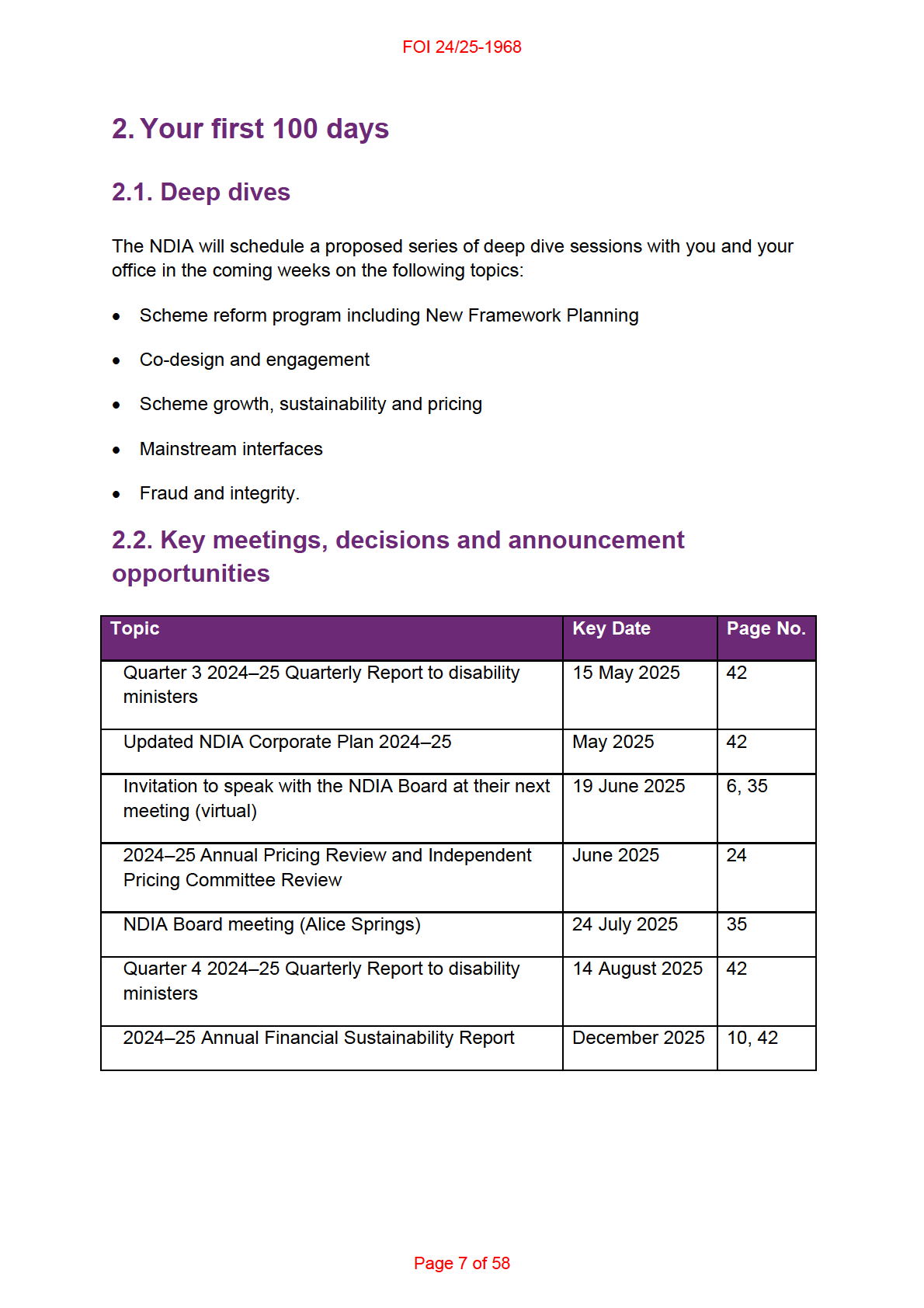
DISCLOSURE LOG DOCUMENT
DISCLOSURE LOG DOCUMENT
FOI 24/25-1968
2.3. Participant story - the NDIS’ impact
Since 2013, the NDIS has been making a significant impact in the lives of
Australians with a disability, enabling them to achieve greater independence, access
new skil s and enjoy a fuller life. The following participant story is one example of
this, highlighting the purpose and benefit of the NDIS.
With sheer determination and the right supports, Mackay NDIS participant Joshua
has achieved his goal of finding and securing work – and he could not be happier.
Working 3 days a week preparing and delivering catalogues, the 18-year-old, who
has level 3 autism, an intellectual disability and obsessive-compulsive disorder, is
fil ed with pride and purpose in a job helping him to build his skil s and
independence.
Joshua used his NDIS funding to engage a disability support provider. They linked
him to Emily, a local area coordinator, who worked with him to get to know his likes,
dislikes, interests and strengths.
Emily said Joshua made it clear all he wanted to do was work, so they started
looking for jobs he liked and would feel comfortable doing as well as help build his
confidence, skil s and independence.
Seeing a catalogue delivery job advertised, Emily supported Joshua to apply, and he
was successful. ‘For Joshua, the structured role plays to his strengths, and he’s
really found a sense of pride and purpose in what he’s doing,’ Emily said.
‘Joshua started out sorting and delivering catalogues one day a week, but as his
confidence grew, his hours did too. Now he’s working 20 hours a week over 3 days!’
Dedicated to his job, Joshua walks 26 kilometres a week, which is also improving his
health. Joshua’s mum Shirley marvels at her son’s determination and strong work
ethic. She credits much of his success to NDIS funding and the support he’s had
from his disability support provider.
‘Joshua is much happier working. He sees his father and brother go to work, so for
him the natural progression was to go to work too,’ Shirley said.
‘Even though he can’t read or write, he’s found a job he can do, he’s good at, and he
enjoys. We are very proud of what he has been able to achieve.
‘The progress Joshua has made is just incredible. This job has given him a new
sense of purpose, and it’s fantastic to see how much it’s helped to boost his
confidence.’
Page 8 of 58
DISCLOSURE LOG DOCUMENT
FOI 24/25-1968
3. Scheme reforms
3.1. Context
• The NDIS was legislated in 2013 and was fully rolled out across Australia by
2020. Today, the NDIS provides life-changing support to over 717,000 adults and
children with disability.
• It was set up as a world-first approach to disability support by putting people with
disability at the centre of decision-making, through the principles of reasonable
and necessary supports and individual choice and control. The NDIS was
designed to complement, not replace, other services for which the states and
territories are responsible.
• While there continues to be widespread support for the original intent of the
Scheme, issues arose as the NDIS matured, around the financial sustainability of
the Scheme; balancing participants’ choice and control with appropriate
guardrails; provider markets and access; and fraud or overcharging by disability
providers.
• In response to these issues, in 2022, all governments agreed to an Independent
Review of the NDIS (NDIS Review) which looked at the design, operations and
sustainability of the NDIS, with an overarching goal to put people with disability
back at the centre of the NDIS.
• The NDIS Review final report delivered in December 2023 envisioned a unified
ecosystem which ensures people with disability receive the right support at the
right time and recommended additional support for all people with disability to
navigate this ecosystem.
• The need for change was also reflected in the Royal Commission into Violence,
Abuse, Neglect and Exploitation of People with Disability (Disability Royal
Commission) final report.
• Whilst the Scheme continues to remain demand-driven, in 2023, National Cabinet
agreed to moderate Scheme growth with an annual growth target of 8% from
1 July 2026.
Page 9 of 58
DISCLOSURE LOG DOCUMENT
FOI 24/25-1968
• The NDIA is acutely aware NDIS reforms have an impact on the broader
disability ecosystem like the impact broader health and social reforms have on
the Scheme. Complementary reforms are needed outside of the NDIS to deliver a
continuum of support for people with disability.
• A stronger disability ecosystem wil relieve pressure on the Scheme and provide
better outcomes for people with disability.
3.2. Scheme sustainability
• Scheme expenses increase due to many factors, such as increased number of
participants, normal inflationary sources (such as increases in wages and
consumer prices), as well as real growth in payments over and above the normal
inflationary sources.
• While the Scheme now operates in all regions of Australia, it remains relatively
immature. The numbers of participants entering the Scheme each year have not
stabilised, and growth in expenses for participant supports continue to grow at a
rate higher than general inflation.
• Subsequently, the size and cost of NDIS has increased at a rate not envisioned
when it was established, with annual growth rates of more than 20% experienced
in recent years.
• While pressures on the financial sustainability of the Scheme remain, design and
implementation of Scheme reforms has commenced, seeking to bring the NDIS
back to its original intent and resulting in the stabilisation of projected Scheme
expenses.
• Collectively, the reforms, which include legislative amendments, Agency
operational changes and a more cohesive ecosystem of support inside and
outside of the NDIS, all include a focus of improving the financial sustainability of
the Scheme.
• Part of this work, progressed in collaboration with the disability community, has
led to a moderation in plan inflation, stabilisation in numbers of participants
accessing Supported Independent Living supports for the first time, and
increased numbers of participants leaving the Scheme as their support needs
stabilise, including children who leave the Scheme after achieving their goals.
• The NDIS 2023–24 Annual Financial Sustainability Report (AFSR) highlighted the
current Scheme reform trajectory is improving the financial sustainability, and its
projections build on the positive trends in NDIS cost stabilisation including:
Page 10 of 58
DISCLOSURE LOG DOCUMENT
FOI 24/25-1968
- Scheme expenses to considerably improve for the 12 months to
30 June 2025, to approximately $500 million less than the 2024–25 Budget
estimate
- growth in Scheme expenses expected to be 12.0% in 2024–25, 8.4% in
2025–26 and 6.7% in 2026–27. Estimated Scheme expenditure is
$46.9 bil ion for 2024–25, and $210.3 bil ion for the 4-year period to
30 June 2028.
- fewer participants at risk of overspending their plans. These results show the
Agency is improving the financial sustainability of the NDIS, to not only deliver
a fairer and more consistent Scheme for participants, but ensure it is here to
stay in the future.
• Data at the end of March 2025 shows year-on-year Scheme growth was at
10.6%, with the NDIA on track to meet the 8% annual growth target. Significant
work to provide more clarity around what can be included in NDIS plans, manage
over-spending of plans, and stop fraud and exploitation of participants has helped
to stabilise growth.
3.3. Reform is underway
• The NDIA is leading a significant program of reform, designed with the disability
community, to implement recommendations from the Disability Royal
Commission and the NDIS Review and to lift the NDIA’s capability, capacity and
systems to better support participants.
• Recent reforms have ensured the NDIA is getting better at managing plan
growth, by providing clarity on what NDIS funding can and cannot be used for
and ensuring every NDIS dollar goes towards participant outcomes.
• While new legislation, passed by the Parliament with bipartisan support,
establishes a platform for much of this important work, the NDIA has been
implementing other measures designed to strengthen the NDIS and provide a
better experience for all participants and their families.
• The main components of the reform program are:
- needs-based New Framework Planning which focuses on a persons’ needs
rather than their functional capacity, and puts guardrails around budget-setting
to prevent participants overspending their NDIS plans
Page 11 of 58
DISCLOSURE LOG DOCUMENT
FOI 24/25-1968
- introduction of a national workforce of navigators who wil help people to
navigate the complexities of the disability ecosystem, including the NDIS, to
access the support and services they need. This wil replace the existing
Partners in the Community model
- a new early intervention pathway to support children younger than 9 with
developmental delay or disability.
• These vital forthcoming reforms reinforce and work alongside important reforms
already in place including:
- providing greater clarity to participants through the introduction of a definition
of NDIS supports - supports which can be funded by the NDIS and clarifying
those that cannot. This clarification is supporting participants to spend their
NDIS funds appropriately
- bolstering the integrity of the Scheme through investment in the multi-agency
Fraud Fusion Taskforce and NDIA’s Crack Down on Fraud program to ensure
every dollar of NDIS funding goes towards participant outcomes.
• This work is being progressed in collaboration with people with disability and the
wider disability community.
• Co-design with the disability community is directly influencing the participant
experience design for the New Framework Planning. There are important themes
emerging about better standards in communication, data quality and information
sharing, helping support participant safety and staff capability.
• Participant feedback has already led to improvements in the participant
experience:
- Through engagement on
participant plans and plan approval letters,
participants told the Agency they wanted clearer information about NDIS
supports in their plans and how they can use and find information in their plan.
The NDIA trialled co-producing the plan and letters directly with participants in
workshops, leading to an improved plan layout, increased accessibility and
vastly easier to use resources. Participants valued being included in plan
design, and the process highlighted how co-design could improve NDIA
artefacts and communications. These artefacts were introduced in mid-2024.
Page 12 of 58
DISCLOSURE LOG DOCUMENT
FOI 24/25-1968
- Co-designing with participants on
Funding periods highlighted
, participants
would value more proactive check-ins for support, including how they are
using their funding. This is to offset their fears that services and supports
would be cut off. Listening to this feedback, the NDIA is building participant
check-ins into the process if there is risk of over or under-spend in a funding
period. This wil help ensure continuity of supports for participants and
alleviate concerns raised in co-design.
- Through engagement with the disability community on the
new definition of
NDIS supports, the NDIA heard participants wanted clarity on what they
could claim if it was balanced with participant choice and control. Undertaking
rapid design with Disability Representative and Carers Organisations
(DRCOs) and Participant First, who help improve the NDIS through
engagement activities, the NDIA co-designed a ‘replacement supports’
process, and collaborated extensively with the disability community on forms,
letters and the participant experience. Consultation also led to easy read and
Auslan versions of the support lists, improving accessibility for participants.
- For
consent, participants highlighted the terms the NDIA uses are confusing.
In collaboration with participants, nominees and family members, the NDIA is
now making the consent process simpler and easier to understand.
- Through
conflict-of-interest co-design, participants and providers said they
wanted more information to understand and navigate conflicts of interest,
including unavoidable conflicts. Participant and provider engagement has
enabled the NDIA to update resources to help address these pain points.
- For
Eligibility Reassessments (ER),
participants told the NDIA they wanted
more time to respond to reassessment requests, greater transparency on
procedural fairness practices, a more empathic message and improved
accessibility in the letters being sent to participants. Working closely with
DRCOs and participants, the NDIA has increased ER timeframes for response
from 28 days to 90 days, and co-produced letter updates to improve their
language, tone and clarity for procedural fairness.
Page 13 of 58
DISCLOSURE LOG DOCUMENT
FOI 24/25-1968
3.4. New Framework Planning
• New Framework Planning is a new framework for informing and implementing the
budgets within participants’ NDIS plans. Staged rol out wil commence from
1 September 2025 with the implementation of a Notice of Impairment.
• Historically, a NDIS participant’s plan has been developed based on an
assessment of a persons’ functional capacity (that is, what they cannot do) which
results in inconsistent decision-making and, while plans can be very complex with
multiple support categories, for many participants there are limited guardrails on
spending their plan funding.
• The New Framework Planning moves to a model based on what a person needs
to be able to live fully; and results in a simplified NDIS plan with set funding
periods. The introduction of funding periods, which define how often a participant
can access a portion of their total budget, will help avoid plan inflation while
maintaining participants choice and control.
• It is based on the NDIS Review which recommended a more structured approach
to planning to deliver better and fairer outcomes for NDIS participants, including a
new planning framework and the introduction of a support needs assessment.
Together, these represent a significant and complex package of work.
• The new approach wil feature a consistent needs-based assessment process to
set budgets at a whole-of-person level, leading to more fairness and
transparency in decision making.
• Budgets will be based primarily on support needs and intensity, which in turn is
intrinsically more person-centred and strengths-based than the functional
assessments and deficit-based approach used currently.
• The New Framework Planning will:
- streamline the planning process and improve the overall experience for
participants
- help to ensure fairer and more consistent supports for people with similar
needs
- make it easier for participants to spend in accordance with their plan, because
they wil know how much funds they have, the amount for each component,
and how long the funds need to last.
Page 14 of 58
DISCLOSURE LOG DOCUMENT
FOI 24/25-1968
• The major component in implementing the new framework is the introduction of
support needs assessment tools, which wil provide a comprehensive
assessment of a participant’s needs. This wil ensure participants receive the
right level of support to enhance their overall wellbeing and independence.
• In February 2025, the NDIA released approaches to market to initiate the
progressive selection of needs assessment tools. Separate needs assessment
tools wil be needed for adults and children, as well as specific tools for supports
such as assistive technology and home modifications.
• These approaches to market wil enable the progressive selection and
procurement of support needs assessment tools. The Agency will continue to
design, test and discuss with people with disability to ensure the tools are
fit-for-purpose and account for the diverse experiences and needs of people with
disability.
• From 1 September 2025, the first stage of New Framework Planning wil be rolled
out with the implementation of a Notice of Impairment for existing NDIS
participants. This will require a specific Notice of Impairment Rule to be made
prior to commencement of the roll out.
• The Notice of Impairment is a contemporary record to provide clarity and
transparency for participants of the categories of their impairments which meet
Scheme access requirements, and for which they receive Scheme funding.
• The Agency anticipates a high volume of participants will request variations to
ensure their impairments are recorded correctly.
• Implementation of Notice of Impairment is a critical step in the reform pathway
and underpins successful implementation of the new model.
3.5. Navigators
• The NDIS Review highlighted the challenges people with disability face in
identifying and accessing supports. It recommended a streamlined navigator role
to provide additional support for all people with disability to navigate the complex
disability ecosystem, including mainstream supports, Foundational Supports and
the NDIS.
• The introduction of the navigator role is critical to achieving more equitable
outcomes and ensuring people with disability find the right support at the right
time and can smoothly transition in and out of support systems, including
between Foundational Supports and the NDIS. This wil reduce reliance on the
NDIS over time.
Page 15 of 58
DISCLOSURE LOG DOCUMENT
FOI 24/25-1968
• The NDIA will pilot a navigation function over the next 2 years and will engage
with you on the design of the navigation function and throughout the progress of
the pilot. It is anticipated the navigation function wil commence from July 2027.
• The NDIA is undertaking design and co-design activities to deliver a more
effective and seamless navigation experience for people with disability,
supporting the uptake of Foundational Supports and reducing the reliance on the
NDIS.
3.6. New early intervention pathway for children
• Complementary reforms are needed within and outside the NDIS to deliver a
continuum of support for children and their families.
• The NDIS Review found access to the NDIS for children is inconsistent,
inequitable and not based on need. It recommended the pathway for all children
under the age of 9 to enter the NDIS under early intervention requirements (with
assurance for children with clear lifelong support needs that their eligibility would
continue beyond age 9 under disability requirements).
• The NDIS Review also recommended children who are eligible for the NDIS
receive a budget based on support needs, determined through child-centred
assessments, early intervention supports for children should be required to be
based on best practice principles and evidence, and the Agency should develop
a better approach for ongoing monitoring and evaluation of the effectiveness of
early intervention for children.
• The NDIA is working with families with lived experience, experts, and the
disability community to design and consult on a new early intervention pathway to
better support children younger than 9 and their families. This includes the
establishment of the Children’s Expert Advisory Group which provides strategic
and technical expert advice on responding to the needs of children with disability
and/or developmental delay.
• Elements of the pathway design include:
- s47C - deliberative processes
- assessment of support needs tailored to children for early intervention which
would enable benefit, to reduce or resolve the impact of the impairment on
functioning as appropriate, as well as capacity building support for families,
where relevant
Page 16 of 58
DISCLOSURE LOG DOCUMENT
FOI 24/25-1968
- early intervention supports based on best practice principles and evidence,
through market and regulatory design
- better monitoring of early intervention support and progress towards the
intended benefit or outcome and clear points of reassessment.
• Children have been identified as a priority cohort for the roll out of Foundational
Supports by states and territories from 2025. It is important the development of
the new NDIS early intervention pathway for children and Foundational Supports
are designed in such a way that a continuum is created which ensures children
with disability or experiencing delayed development, and their families, can
access the right service at the right time.
• s47C - deliberative processes, s34 Cabinet document
3.7. Co-design and engagement
• People with disability have sent a clear message to Government: nothing about
us without us. The NDIA is committed to working with people with disability and
the wider disability community to improve the NDIS.
• The NDIA’s commitment to co-designing with people with disability was
enshrined in legislation on 1 July 2022, and is reflected in the shared statement
on co-design, released in partnership with the Independent Advisory Council
(IAC) and DRCOs.
• The NDIA has an extensive co-design and engagement program underway.
This includes the operation of a number of standing co-design working groups
jointly chaired by disability sector and the Agency, sessions with DRCOs, IAC,
focus groups with participants and other key reference and advisory groups.
• The current co-design program is focused on reforms being introduced and
implemented in 2025, across 4 co-design working groups:
- Assessments and Budgeting.
- Navigators.
- Participant Pathway Experience.
- Participant Safeguarding.
Page 17 of 58
DISCLOSURE LOG DOCUMENT
FOI 24/25-1968
3.8. Risks and challenges of reform
• Both the NDIA and the NDIS has been through a period of significant change
since mid-2022. This period of significant change is expected to continue until
mid-2028 when the transition to New Framework Planning wil reach a peak for
implementation and the Agency returns to a period of stabilisation before tapering
to business as usual in early 2031.
• The significant reform agenda poses some challenges due to the volume of
reforms, timeframes for delivery, and the Agency’s capacity to design, deliver and
manage change.
• s47C - deliberative processes, s34 Cabinet document
• s34 Cabinet document, s47C - deliberative processes
• The overall status of the Scheme reform program is ‘on track’ to commence the
staged transition to New Framework Planning from September 2025. A key step
in this process occurred in February 2025, when the NDIA released an approach
to market for support needs assessment tools for adults, and an industry
consultation process about how to best understand support needs for children
and specific kinds of support funded by the NDIS.
• There are, however, significant dependencies in the critical path, including states
and territories must agree the legislative instrument (‘Rule’). Further
dependences prior to implementation are:
- outcome of
support needs assessment tools procurement.
-
experience design for participants, staff, partners, providers and other
impacted stakeholders.
- s47C - deliberative processes
Page 18 of 58
DISCLOSURE LOG DOCUMENT
FOI 24/25-1968
-
workforce planning and recruitment to deliver New Framework Planning.
Work is underway on modelling workforce requirements for implementing new
framework and current state planning workforces concurrently.
• The NDIA is committed to implementing the reform program and meeting the
annual growth target despite key dependencies and ongoing pressures such as
workforce and technology capability.
• A phased delivery approach wil provide the NDIA maximum flexibility to respond
to operational and other contingencies and allow for transition numbers to scale
in line with the Agency’s ability to deliver New Framework Planning and allows for
concurrent design work to happen on later elements of the program.
3.9. Next steps
• Phased implementation of New Framework Planning wil commence from
1 September 2025, with the roll-out of Notice of Impairment. Subsequent
implementation wil be staged across the next 1-3 years.
• The Agency will brief you on what ‘day 1’ wil look like for participants and other
impacted stakeholders and provide you a suggested handling approach.
• s47C - deliberative processes
• We wil also provide briefing on the full staged rollout, including the complexities
and challenges of meeting the reform agenda and will work with you on mitigating
these risks to ensure the benefits of the reform program are realised.
Page 19 of 58
DISCLOSURE LOG DOCUMENT
FOI 24/25-1968
4. Operational issues
4.1. Critical budget issues
Issue
• The NDIA has laid significant foundations to deliver on the recommendations of
the NDIS Review, started implementing the
NDIS Amendment (Getting the NDIS
Back on Track No.1) Act 2024,
and made significant steps towards achieving
National Cabinet’s 8% annual growth target from 1 July 2026.
• Long-term funding certainty is required to maintain the current sustainability
trajectory and high-quality service delivery to participants.
• The NDIA is currently funded year-on-year and, as a result, faces significant
budget challenges which, if not addressed, wil hinder ongoing reforms and the
level of service delivery. These challenges include:
- insufficient future funding for service delivery and enabling operations
- funding uncertainty for current reforms and efficiencies underway (including
future investment in fraud and integrity activities)
- additional investment requirements for the frontline workforce.
• Continued investment is required to enable the NDIA to implement and
operationalise recent reforms to continue the current trajectory to meet the
8% annual growth target from 1 July 2026.
• Without sustained funding, current efficiencies and savings wil be lost and
directly impact the NDIA’s ability to achieve the target. Decreased Agency
efficiency and increased cost inefficiencies wil also put at risk any sustainability
progress gained to date.
s47E(d) - certain operations of agencies
Page 20 of 58
DISCLOSURE LOG DOCUMENT
FOI 24/25-1968
Stakeholder impacts
s47C - deliberative processes
• Long-term funding certainty is needed for the Agency to build its workforce
capability, better support participants through the planning and engagement
process, and ensure the benefits of the reform program are realised.
• Investment is needed to ensure reform programs create efficiencies, and
activities, such as fraud and integrity activities, are delivered for the benefit of
participants and Scheme sustainability.
Next steps
• s47C - deliberative processes
Page 21 of 58
DISCLOSURE LOG DOCUMENT
FOI 24/25-1968
4.2. Workforce Impact
Issue
• Implementation of Scheme reforms wil have a significant impact on the Agency’s
frontline workforce. The NDIA wil be required to undertake new functions,
meaning the core operational activities of the frontline must be redesigned to
support a new participant pathway while at the same time ensuring business as
usual can be maintained
and sustainability targets are met.
• s47C - deliberative processes
• s47C - deliberative processes
• The Agency has proposed a 5-year workforce transition to enable implementation
of New Framework Planning. Through the 2024–25 MYEFO process, the Agency
secured $280 million for 1,000 new Support Needs Assessors and funding to
ready the Agency for workforce transformation. This funding is an initial
investment in year 1 only; and the Agency will work with you to seek further
funding to support workforce transformation across years 2 to 5.
• Participant expectations captured through the Independent Review of the NDIS
(NDIS Review) and the Agency Co-Design Working Groups has informed, and
wil continue to inform, this work.
• Through recent co-design meetings, participants proposed frontline capabilities
including a contemporary knowledge of disability, critical thinking, effective
communication, trauma informed practice, and cultural responsiveness.
Stakeholder impacts
• There is significant industrial complexity, with current Partner employees
engaged across a broad range of industrial arrangements and providers. The
design of the new navigator function wil anticipate industrial transitions across
these workforces, including potentially current Agency workforces.
Page 22 of 58
DISCLOSURE LOG DOCUMENT
FOI 24/25-1968
• Bringing current staff and the Community and Public Sector Union (CPSU) on
this change journey wil also be a key consideration. The Agency is working on a
detailed change and engagement plan to support this.
• In addition to workforce requirements for New Framework Planning, Partners in
the Community retain a critical function in maintaining current state planning
through the transition period. Careful consideration needs to be given to all levers
available: contracting arrangements, pricing, and regulation during the transition.
This includes risk-mitigation measures to ensure the uninterrupted delivery of
service to participants throughout the transformation process.
NDIS workforce opportunities
• Workforce transformation presents a unique and critical opportunity to diversify
the workforce to better reflect the Australian population, and to ensure lived
experience and cultural safety for First Nations participants are fundamental
features of the Agency workforce and participant experience.
• Currently, 22% of NDIA staf report living with disability—the highest percentage
across Australian Public Service (APS) agencies. Some areas of the Agency,
such as the National Contact Centre, have achieved significantly improved
recruitment and retention rates for people with disability. There is an important
opportunity to embed these recruitment practices to ensure the investment in
workforce expansion accelerates disability recruitment in the Agency.
• Implementing New Framework Planning also provides an opportunity to build a
workforce that is more culturally safe for First Nations participants. This requires
an integrated approach, including upskil ing non-Indigenous people to work with
First Nations participants and continuing to build a strong First Nations
workforce.
Next steps and timing
• s47C - deliberative processes
Page 23 of 58
DISCLOSURE LOG DOCUMENT
FOI 24/25-1968
4.3. Annual Pricing Review and the NDIA pricing approach
Issue
• NDIS Pricing Arrangements and Price Limits (previously the NDIS Price Guide)
assist participants and disability support providers in understanding how price
controls for supports and services work in the NDIS. Price regulation is in place to
ensure participants receive value for money in the supports they receive.
• NDIS price limits are set by the NDIA Board. When the pricing model was
established at the commencement of the NDIS, it was expected the market would
support a range of price points based on usual demand factors (such as quality
and availability). s47C - deliberative processes
• The Annual Pricing Review (APR) and the associated setting and publishing of
NDIS price limits is the NDIA’s main tool for shaping provider markets. It is critical
in ensuring a sustainable NDIS provider market that can deliver supports to
participants, while enforcing Scheme sustainability.
• The NDIA Board sets price limits of a range of disability supports and services
through the APR process. A range of initiatives and measures are underway to
inform and improve the approach to setting prices for NDIS providers.
These include:
- the establishment of the Independent Pricing Committee (IPC) in
September 2024, to review NDIS pricing approaches, and recommend
changes to the NDIA Board, to improve the quality of supports and ensure
sustainable disability provider markets
- the Quality Supports Program that enhances service specification for
participants and informs future pricing and market approaches, ensuring NDIS
participants have access to high quality supports. The program has initiated
two 12-month pilot programs focusing on support coordination and supported
independent living. The 2 pilots program launched in early 2025, wil help the
Agency understand the range of supports required for different levels of
participant need, and in turn, how to price supports to enhance quality service
provision.
Page 24 of 58
DISCLOSURE LOG DOCUMENT
FOI 24/25-1968
• The NDIS Review recommended to reform the NDIS pricing and payments
framework and transition responsibility for advising Government on suitable
indicators of the market price and price caps to the Independent Health and Aged
Care Pricing Authority (IHACPA).
• In response, the Government invested $5.3 million in 2024–25 for IHACPA to
work with the Department of Social Services (as the then-disability policy lead)
and the NDIA to undertake initial work to reform NDIS pricing arrangements,
including reviewing existing pricing approaches and developing a pricing data
strategy. Noting there are risks associated with transitioning pricing away from
NDIA which would need to be carefully managed.
• The NDIS Disability Support Worker Cost Model determines most price limits for
assistance with daily living supports, and social, community and economic
participation supports (and some capacity building supports).
• s47C - deliberative processes
• The provisional decision for the FWC’s gender-based undervaluation wage
review into priority awards (external) was announced on 16 April 2025. s47C - deliberative processes
• NDIS provider representative organisations have been lobbying for increases in
price limits for disability support, therapy and intermediaries. There is always a
risk providers withdraw from the market where price limits are deemed to be
inadequate. However, the NDIA monitors market dynamics as part of setting
annual price limits and notes the current rate of registered providers leaving the
market remains relatively stable.
• s47C - deliberative processes
Page 25 of 58
DISCLOSURE LOG DOCUMENT
FOI 24/25-1968
Stakeholder impacts
• Quality outcomes for participants can only be achieved when there is a quality
provider market. The APR process and setting NDIS pricing arrangements is
crucial to ensuring a sustainable provider market to deliver supports to NDIS
participants.
Next steps and timing
• The IPC’s final report wil explore strategic reforms and medium-term pricing
approaches to improve market sustainability and ensure participants continue to
receive quality supports. The Agency will welcome the opportunity to brief you on
the IPC final report and the Board’s pricing approach for 2025–26, likely
stakeholder impacts and suggested handling approach.
Page 26 of 58
DISCLOSURE LOG DOCUMENT
FOI 24/25-1968
4.4. NDIS fraud and integrity activities
Issue
• There is an ongoing focus on increasing safety and outcomes for participants by
embedding integrity into the NDIS at every opportunity, to ensure it operates
effectively for those it is intended to support. This work is also critical for the
financial sustainability of the Scheme and to maintain community confidence.
• Fraud and integrity activities focus on increasing safety and outcomes for
participants by improving the integrity of providers and the NDIS, making it easier
to get it right and harder to get it wrong.
• The NDIS is the most complex payment program in Australia, processing over
500,000 claims per day, totalling over $100 mil ion. This is the highest claim
volume per day of any Government program, except Medicare. The NDIS also
processes the broadest range of claims from the largest provider cohort in the
country.
• While a minority of claimants are responsible for the most serious fraud and
non-compliance, integrity risks are negatively impacting the entire Scheme and
its ongoing sustainability. Given the scale and scope of NDIS claims and
providers, the community expects the full range of compliance and enforcement
interventions to assure the integrity of the NDIS.
• The NDIA is increasing safety and outcomes for NDIS participants by improving
integrity and reducing fraud through the multi-agency Fraud Fusion Taskforce
and Crack Down on Fraud program. The Agency also works to educate
participants about fraud, especially how to know it, spot it and report it.
Understanding fraud wil support participants protect to their NDIS plans.
• This year has already seen increased activity, from education to prosecutions, to
reduce the critical vulnerabilities that impact participant safety and Scheme
sustainability. Some of these interventions wil also be supported by Fraud Fusion
Taskforce member agencies.
• The focus on embedding integrity into the NDIS wil be reinforced through every
element of Scheme reform, including improved governance, new supports needs
assessment and participant pathways, workforce initiatives, and ongoing
engagement with the disability sector in design and implementation. It is also
important to note there are many integrity vulnerabilities that can only be
effectively addressed through further legislative reform.
Page 27 of 58
DISCLOSURE LOG DOCUMENT
FOI 24/25-1968
Background • Through the multi-agency Fraud Fusion Taskforce and the NDIA’s Crack Down
on Fraud program, the NDIA has identified over 19,000 NDIS participants who
may have been impacted by fraudulent providers, and supported thousands to
transition to safer arrangements, including changing providers.
• The Fraud Fusion Taskforce, co-led by the NDIA and Services Australia has
23 member agencies, including the Australian Taxation Office, Australian
Securities and Investments Commission, and the Australian Federal Police.
It works to find and stop fraud against Government programs, like the NDIS, and
includes intelligence sharing, prosecution and other regulatory actions.
• Over the past 9 months, the Fraud Fusion Taskforce has executed more than
60 warrants on individuals and entities suspected of defrauding millions of dol ars
from the NDIS. This includes cases of significant unexplained wealth, including
multi-million-dollar houses, luxury cars and high-end watches.
• Currently, 78 active investigations of potential fraud against the NDIS are
underway. This includes losses across the spectrum, including general misuse,
opportunistic fraud and sophisticated syndicated fraud.
• This whole-of-government work is complemented by the Agency’s Crack Down
on Fraud program, which is strengthening fraud prevention, detection and
response. The program has implemented a range of measures to improve the
integrity of the claiming process for participants with self-managed NDIS plans.
• The Crack Down on Fraud program is already estimated to save the NDIS over
$1.3 bil ion in benefits across the forward estimates (1 July 2024 to 30 June
2028). This includes $399 mil ion in savings to the NDIS and an additional $918
mil ion in payments diverted away from problematic integrity providers.
• This financial year (to 31 March 2025), the NDIA has received more than
22,000 tip-offs of potential fraud or non-compliance with the NDIS.
Next steps
• You wil be provided with an in-depth briefing on the NDIA’s fraud and integrity
programs, and the Agency wil work with you to develop options for funding
proposals to enable the NDIA to continue to transform core systems and improve
the integrity of the NDIS.
• Briefings wil be provided on specific law enforcement activities.
Page 28 of 58
DISCLOSURE LOG DOCUMENT
FOI 24/25-1968
4.5. Debt management
Issue
• It is likely you wil receive representations from the disability community with
concerns about the Agency’s debt management approach. Debt management is
a sensitive topic within the Australian community and especially the disability
community.
• During 2024, focus shifted to payment integrity, stopping non-compliant claims
before they are paid and reducing the reliance on debt raising. However, the
ability to raise debts is stil required by the Agency.
• The NDIA has also put in place a process for ‘Agency initiated’ debts to ensure
debts against a participant require endorsement from the Strategic Leadership
Team Debt Panel which includes the Chief Executive Officer.
• The integrity of the NDIS is vital for Scheme sustainability. The Agency has the
power to recover a debt from a participant or provider who has received NDIS
funding they are not entitled to.
• Using fair and transparent debt management practices, to recover money
following incorrect NDIS claiming, helps maintain the financial sustainability of the
Scheme and is a necessary part of good public sector financial management.
• A range of NDIS debt management improvements are currently underway,
including a review of open and historical debts to ensure debt determination,
administration, management and recovery processes conform with recent
legislation changes and other legislative requirements.
Stakeholder impacts
• The NDIA is engaging with participants who self-manage their NDIS plan to
ensure they are aware of their responsibilities for submitting compliant claims.
• There are safeguards to ensure compliance and debt management practices are
fair and carefully considered, such as opportunities to the individual to provide
substantiating evidence, which is considered by the above groups.
Next steps and timing
• s47C - deliberative processes
Page 29 of 58
DISCLOSURE LOG DOCUMENT
FOI 24/25-1968
4.6. Partners in the Community
Issue
• Partners in the Community (Partners) organisations are the primary contact for
NDIS participants in their local area. They help people apply to the NDIS,
implement their NDIS plan, and check in to monitor progress. Partners also
support people with disability who are not NDIS participants, including children,
their families and carers, to connect to mainstream and community services.
• The NDIS Review proposed changes to the way supports and services are
delivered, including the services provided by Partners. Work has commenced to
design a future navigator service, to provide additional support for all people with
disability to navigate the disability ecosystem, in line with recommendations from
the NDIS Review.
• Agreements with Partners delivering early childhood and local area coordination
services are due to expire on 30 June 2025. The NDIA Board approved an
extension of current Partner agreements by 2 years, to 30 June 2027, to ensure
continued connections and support for NDIS participants, while NDIS reforms are
underway.
• s47C - deliberative processes
• s47C - deliberative processes
Participant impacts
• Extending Partner agreements wil mean over 70% of NDIS participants wil
receive continued support from their existing early childhood or local area
coordinator.
• Participants wil have increased choice of coordination within Partners, through
strengthened requirements and wil experience improvements to partner service
delivery as performance targets increase over time.
Page 30 of 58
DISCLOSURE LOG DOCUMENT
FOI 24/25-1968
Stakeholder impacts
• s47C - deliberative processes
• Partners may provide feedback about their ability to deliver services for a growing
participant cohort within similar levels. Partners may also seek to meet with you,
to discuss their views on the proposed extension or future NDIS reforms.
Any queries from Partners about the extension should be directed to the NDIA, to
ensure confidentiality in the negotiation process.
• The disability sector may be concerned that their previous feedback
(pre-NDIS Review) about the Partner program has not been addressed.
To address these concerns, the NDIA has established an advisory group, with
sector representation, to support co-design of navigation reforms. Some
improvements to the program wil be made in the short term via this extension of
current Partner agreements.
• s47C - deliberative processes
Next steps
• s47C - deliberative processes
• s47C - deliberative processes
Page 31 of 58
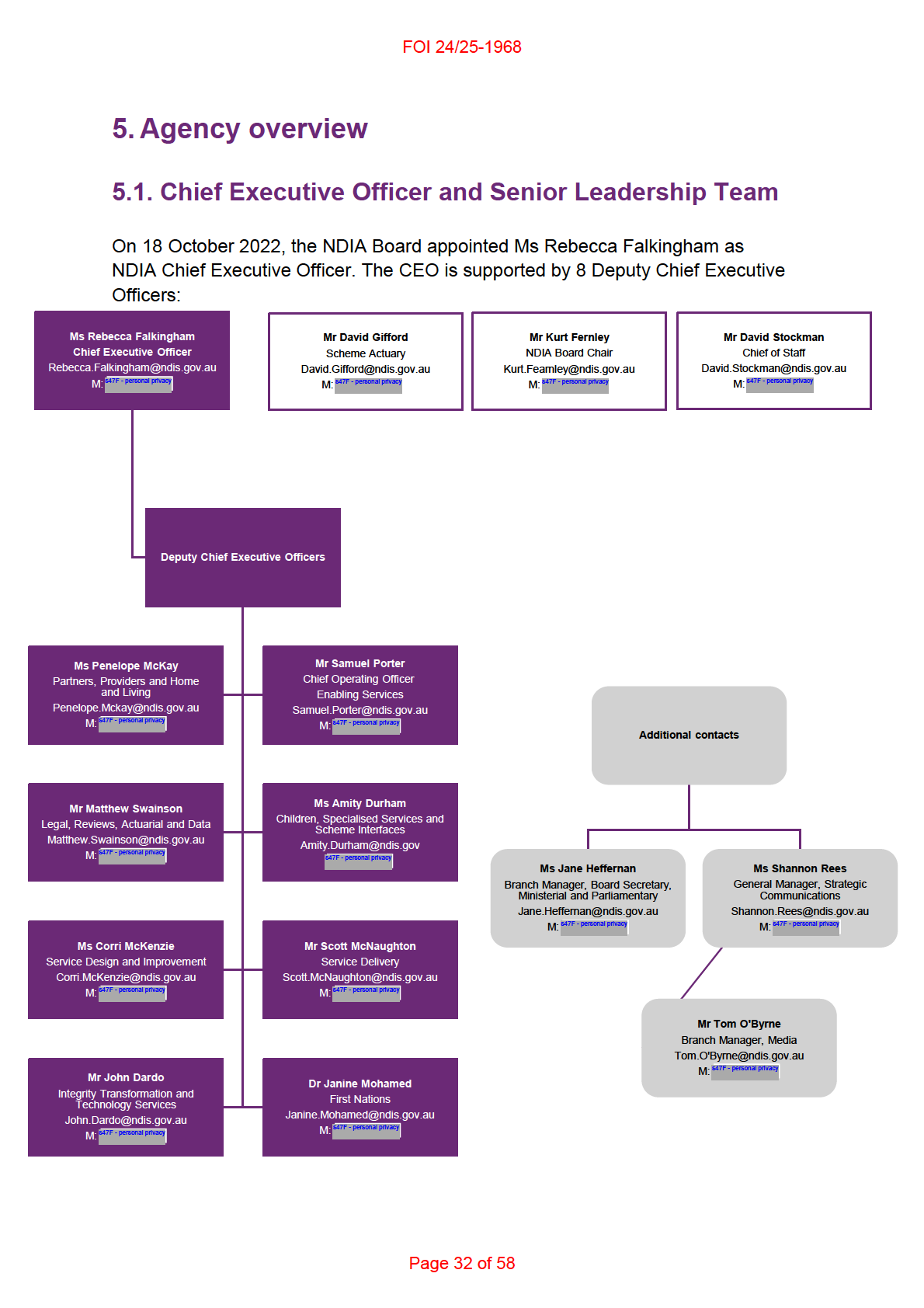
DISCLOSURE LOG DOCUMENT
DISCLOSURE LOG DOCUMENT
FOI 24/25-1968
5.2. Ministerial Support
You can expect a high level of service from the NDIA to assist you to perform your
ministerial roles within Government.
The Board Secretary, Ministerial and Parliamentary Branch has day-to-day
responsibility for managing the interface and the flow of material between the NDIA,
your office and the Parliament. Jane Heffernan, Branch Manager, is available to
discuss your requirements with your Chief of Staff.
The Ministerial Services Charter, which wil be provided to your office separately,
details the supports the Agency can provide your office, including processes for
dealing with briefings, correspondence and representations from individual NDIS
participants.
The Agency is also able to assist you with media releases and information to
respond to media enquiries. Tom O’Byrne, Branch Manager, Media, is available to
discuss your requirements with your Chief of Staff and Press Secretary.
5.3. NDIA workforce
To deliver the NDIS effectively, the NDIA’s workforce capability must align with the
needs of participants and their families and carers. The NDIA is commit ed to
expanding and enhancing its focus on disability and cohort awareness, while
prioritising the improvement of frontline capability and overall participant experience.
The total NDIA workforce is 17,534 people, comprising:
• 9,129 APS employees (8,857 full-time equivalent (FTE) and 8,241 Average
Staffing Level (ASL)).
• 2,142 contractors, including 1,851 labour hire staff, 218 consultants and
73 contractors with system access only.
• 6,263 outsourced workers, including 4,669 Partners in the Community staff,
1,584 National Contact Centre staff and 10 other outsourced staff.
The number of APS employees who live with a disability increased to 22% in 2024,
which is above the target of 19%. The number of Senior Executive Service APS
employees living with disability is 22% which is also above its target of 12%.
In 2023–24, 1,210 new APS employees joined with more than half in front-line
participant-facing roles.
Page 33 of 58
DISCLOSURE LOG DOCUMENT
FOI 24/25-1968
Remote Community Connector Program
The Remote Community Connector Program is being expanded in 2025, so
participants have access to local experts on the Scheme, where there is no Partner
in the Community. Expansion wil increase coverage to all First Nations communities
in remote and very remote areas and will cover 8,800 participants.
Aboriginal Disability Liaison Officer program
The Aboriginal Disability Liaison Officer program offers an important function to
First Nations people with disability in areas where there is a Partner in the
Community. The Aboriginal Disability Liaison Officer program wil continue and will
be a critical part of the Agency’s delivery of the navigator function.
NDIS First Nations Strategy
The NDIA is improving outcomes for First Nations people with disability in line with
recommendations of the Royal Commission into Violence, Abuse, Neglect and
Exploitation of People with Disability, Independent Review of the NDIS and the
commitment under the National Agreement on Closing the Gap. First Nations people
with disability account for around 8% of total NDIS participants.
In January 2025, NDIS First Nations Strategy 2025–2030 was released with key
priority areas. The Strategy wil support the First Nations Group to deliver cultural
safety initiatives, policy reforms, Market and Sector Development, Indigenous data
sovereignty and a First Nations workforce strategy.
In February 2025, the NDIA established a new Independent Advisory Council (IAC)
First Nations Reference Group (FNRG) to elevate First Nations voices in decision
making. The IAC FNRG comprises of only First Nations people with disability and
provides the IAC and NDIA Board with advice on matters affecting First Nations
people.
Early Ministerial support and advocacy for the implementation of the Strategy and
new First Nations governance architecture wil help to promote a strengths-based
approach to improving meaningful outcomes, mitigate against public criticism, and
provide the imprimatur to embark upon the transformational change required to close
the gap.
Page 34 of 58
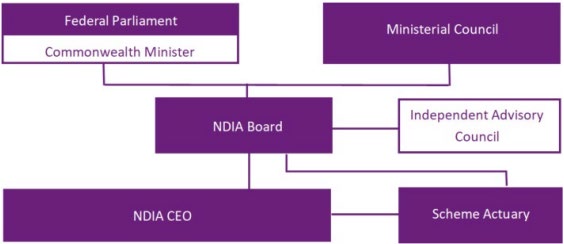
DISCLOSURE LOG DOCUMENT
FOI 24/25-1968
5.4. NDIS governance
The NDIA is a Corporate Commonwealth entity under the
Public Governance,
Performance and Accountability Act 2013 (PGPA Act) with statutory authority under
the
National Disability Insurance Scheme Act 2013 (NDIS Act). The governance
model is set out in the NDIS Act) and il ustrated in the following diagram.
5.5. Board of the National Disability Insurance Agency
The NDIA Board is the governing body and Accountable Authority and its role and
functions are established by the NDIS Act. The Board’s primary functions are to
ensure the proper, efficient and effective performance of the NDIA and to determine
the Agency’s objectives, strategies and policies.
The NDIS Act establishes certain requirements that underpin the relationships
between the NDIA Board and the Minister for the NDIS. In particular, the Minister for
the NDIS may give the NDIA Board a statement setting out strategic guidance for the
Agency, noting consultation must first occur with each host jurisdiction to seek their
agreement to the giving of the statement.
The NDIA Board is also responsible for reporting its performance to the Disability
Reform Ministerial Council (DRMC) as set out in the NDIS Act, the PGPA Act and
intergovernmental agreements with states and territories.
Meetings are held in different locations throughout the country and the Board takes
the opportunity to meet with local advocacy organisations, providers of support,
NDIS participants and their families.
Page 35 of 58
DISCLOSURE LOG DOCUMENT
FOI 24/25-1968
The Board has regard to the experience of participants, primarily through the advice
of the Independent Advisory Council (IAC), which is established by the NDIS Act and
led by the IAC principal member, who is also a Board member.
Board members attend IAC meetings on a rotational basis and the Board Chair
attends DRMC meetings.
The terms of 4 Board members are due to expire in 2025, including the Chair and
there is one vacancy. Your department manages the appointment process of Board
members in consultation with the Minister and state and territory disability ministers.
Current members of the NDIA Board (external) are:
• Mr Kurt Fearnley AO (Chair)
• Mrs Joan McKenna Kerr
• Mr Mark Darras
• Dr Denis Napthine AO
• Ms Maryanne Diamond AO
• Ms Estelle Pearson
• Dr Richard Fejo
• Ms Leah van Poppel
• Dr Rhonda Galbally AC
• Dr Ian Watt
• Dr Graeme Innes AM
Ministerial Council – Disability Reform Ministerial Council
The Disability Reform Ministers Council (DRMC) is the ‘Ministerial Council’ for the
purposes of the NDIS Act. It is a forum for Commonwealth and state and territory
ministers responsible for disability policy to drive national reform and is Chaired by
the Commonwealth. Your department provides secretariat support.
DRMC receives reports and advice from the Board as required by the NDIS Act,
considers policy matters that relate to the NDIS, and advises the Minister. The
Minister also consults DRMC about policy matters relating to the NDIS or that arise
under the NDIS Act. DRMC also drives national reform in disability policy and
implementation, including the NDIS and Australia’s Disability Strategy 2021–2031
(external).
Page 36 of 58
DISCLOSURE LOG DOCUMENT
FOI 24/25-1968
Independent Advisory Council
The Independent Advisory Council (IAC) was established under the NDIS Act to
bring the views of people with disability, carers and sector experts to the heart of the
NDIS, providing independent advice to the Board on the way the NDIA is delivering
the NDIS.
The IAC has 5 reference groups to support its work and advice:
• Children, Young People and Families Reference Group.
• Equity and Inclusion Reference Group.
• Home and Living Reference Group.
• Intellectual Disability Reference Group.
• First Nations Reference Group.
IAC member profiles are available on the IAC website (external)
Government policy relating to people with disability Your department holds overarching responsibility for administration of Government
policies, programs and services relating to people with disability. The NDIA works
very closely with the department across a range of matters, especially in relation to
its responsibility for strategic policy, including stewardship of the NDIS provider
market and administration of the NDIS Act.
5.6. Accountability mechanisms
Australian National Audit Office
The Australian National Audit Office (ANAO) has 2 open performance audits
(external) for the NDIA, examining the effectiveness of the Board and management
of NDIS payment claims compliance.
The ANAO’s final report on the effectiveness of the Board’s governance is due in
early 2025 and its audit on of payment claims compliance is due in mid-2025.
The Agency tracks management actions taken to address ANAO recommendations
and regularly report to the Board and the Audit and Risk Committee on their status.
Page 37 of 58
DISCLOSURE LOG DOCUMENT
FOI 24/25-1968
Joint Standing Committee on the NDIS
The Joint Standing Commit ee on the NDIS is tasked with inquiring into the
implementation, performance, governance, and administration and expenditure of
the NDIS, as well as other matters relating to the NDIS if referred to it by either
house of the Australian Parliament.
Further information about the committee and its previous inquiries can be found on
the Parliament of Australia website (external)
PGPA Act and Commonwealth Procurement Rules
The
Public Governance, Performance and Accountability Act 2013 (PGPA Act) and
the Commonwealth Procurement Rules (CPRs) provide clear direction regarding the
responsibility and accountability of all officials involved in procurement processes.
The PGPA Act establishes the separation of roles by outlining the duties of
accountable authorities (in the NDIA’s case, the NDIA Board) to manage public
resources appropriately. Officials, rather than Ministers, are responsible for making
procurement decisions.
Under the CPRs, except where required by law, Ministers must not be involved in the
conduct of procurement processes or direct officials on the conduct of procurement
processes. The CPRs do allow the NDIA to keep the Minister informed about the
conduct of procurement processes.
While the NDIA is not bound by the CPRs, the NDIA Board has committed to
following the CPRs, with a small number of exceptions relating to the use of
AusTender requirements and reporting.
5.7. NDIS context and governing frameworks
The Convention on the Rights of Persons with Disabilities
The United Nations Convention on the Rights of Persons with Disabilities
(UNCRPD) is an international human rights convention that sets out the
fundamental human rights of people with disability, and is made up of
2 documents:
• The UNCRPD contains the main human rights provisions expressed as a series
of articles; it came into force in Australia in 2008.
• The Optional Protocol to the Convention on the Rights of Persons with
Disabilities is a more limited document that sets up an individual complaints
procedure; it came into force in Australia in 2009.
Page 38 of 58
DISCLOSURE LOG DOCUMENT
FOI 24/25-1968
The UNCRPD contains traditional human rights concepts that are general protections
found in other thematic human rights conventions. For example, it outlaws
discrimination in all areas of life, including employment, education, health services,
transportation and access to justice.
For further information please refer to United Nations Convention on the Rights of
Persons with Disabilities (UNCRPD) | Australian Human Rights Commission (external)
Australia’s Disability Strategy
Australia’s Disability Strategy 2021–2031 (external) was launched on
3 December 2021 and is Australia’s national disability policy framework, setting out
a plan for continuing to improve the lives of people with disability over the next
10 years. A 2024 review of the strategy is published on the Department of Social
Services website at Australia’s Disability Strategy 2024 Review | Disability
Gateway (external).
An independent evaluation of the strategy wil start in 2025.
Productivity Commission report on disability care and support
In 2011, after examining a range of options and approaches, including international
examples of the provision of long-term care and support for people with severe or
profound disability, the Productivity Commission recommended the establishment of
a new national scheme that provides insurance cover for all Australians in the event
of significant disability.
In response to this report, the NDIS was established with bipartisan support.
For further information and the Productivity Commission’s report please refer to
Inquiry report - Disability Care and Support - Productivity Commission (external)
The NDIS Act
The
National Disability Insurance Scheme Act 2013 (NDIS Act) (external)
, in
conjunction with other laws, gives effect to Australia’s obligations under the UNCRPD
and sets out the general principles, requirements and operation of the NDIS.
The NDIS Act also establishes the NDIA as the independent statutory agency
responsible for the administration of the NDIS, with a Board to ensure the proper,
efficient and effective performance of the Agency’s functions.
Page 39 of 58
DISCLOSURE LOG DOCUMENT
FOI 24/25-1968
The core functions of the NDIA are set out in the NDIS Act and include:
• delivering the NDIS in a way that supports the independence and social and
economic participation of people with disability
• enabling people with disability to exercise choice and control in the pursuit of their
goals and the planning and delivery of their supports
• promoting the provision of high quality and innovative supports enabling people
with disability to maximise independent lifestyles and inclusion in the community.
There are specific functions relating to managing, advising and reporting on the
financial sustainability of the NDIS.
The
National Disability Insurance Scheme Amendment (Getting the NDIS Back on
Track No.1) Act 2024 passed Parliament in August 2024.
NDIS Rules
The NDIS Rules are legislative instruments made under the NDIS Act that set out
the more detailed operation of the NDIS. The Rules accompany and should be read
in conjunction with the NDIS Act.
NDIS Rules include:
• Becoming a Participant
• Supports for Participants, Children, Nominees
• Plan Management
• Registered Providers of Supports
• Protection and Disclosure of Information
• Intergovernmental agreements.
NDIS Rules are available at Federal Register of Legislation - National Disability
Insurance Scheme Act 2013 (external)
Operational guidelines explain how the NDIS Act, the NDIS Rules and operational
policy are implemented. They are available at Operational Guidelines | NDIS
(external)
Page 40 of 58
DISCLOSURE LOG DOCUMENT
FOI 24/25-1968
Intergovernmental Agreements
The NDIS is a national scheme, with funding and governance involving federal, state
and territory governments in accordance with the NDIS Act. Bilateral agreements
have been established between the Commonwealth and each of the state and
territory governments, which set out the agreed funding arrangements.
The operation of these agreements and NDIS costs and funding are reviewed every
5 years, with the next review due by December 2028.
Responsibilities of the NDIS and other service systems
Principles to determine the interactions of the NDIS with other service systems
were agreed by governments in 2015, noting they reinforce the obligations of other
service delivery systems to improve the lives of people with disability.
Governments agreed to the Applied Principles and Tables of Support (APTOS)
(external), which set out the responsibilities of the federal, state and territory
governments to provide a range of supports to people with disabilities through the
NDIS and mainstream systems.
APTOS principles had previously been enshrined in the Supports for Participants
Rules and are now broadly reflected in the NDIS Supports list under Section 10 of
the NDIS Act. Note over the coming 12 months the NDIS Supports list and
associated Rule may be subject to further refinement and will require collaboration
and agreement with states and territories.
Page 41 of 58
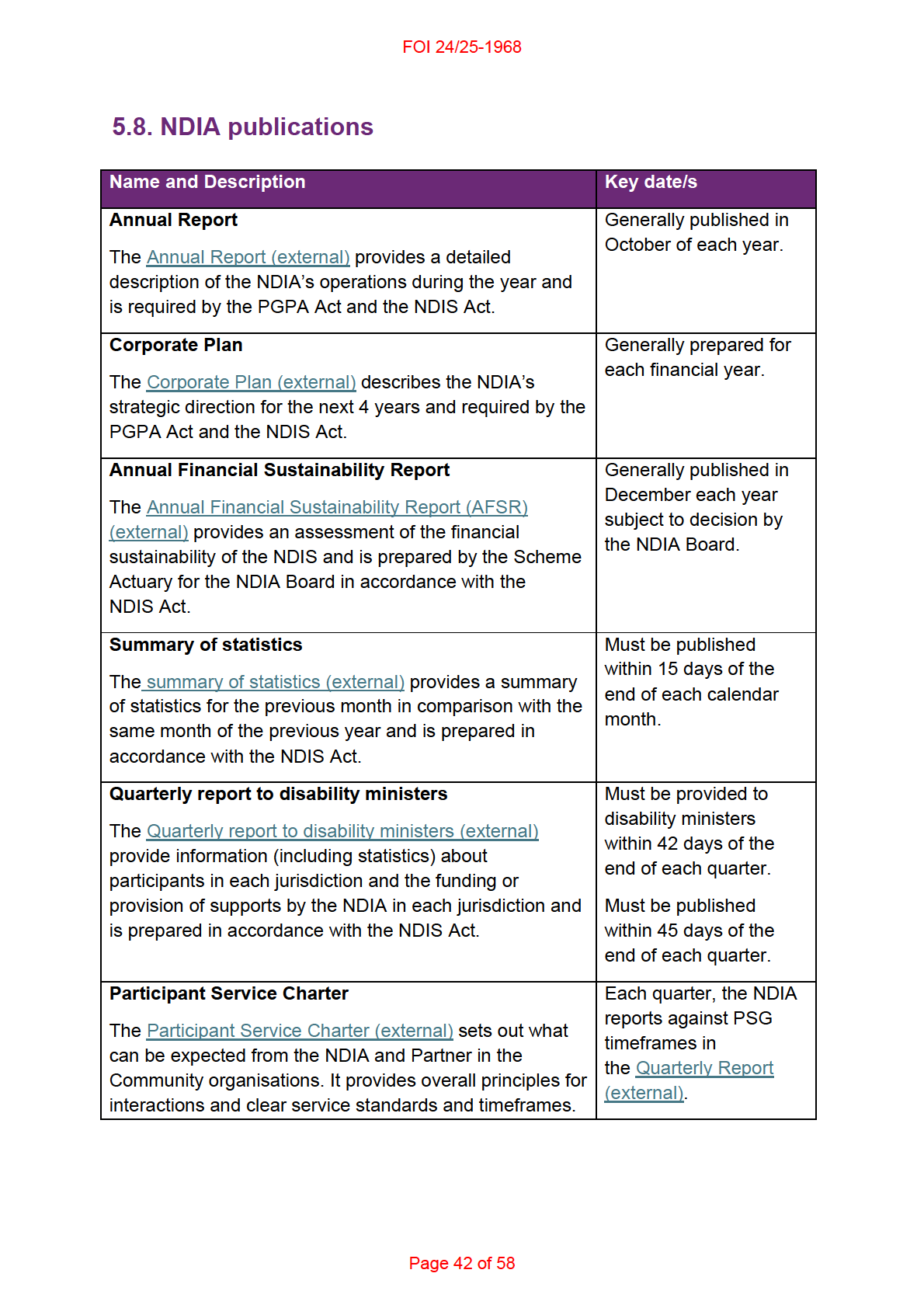
DISCLOSURE LOG DOCUMENT
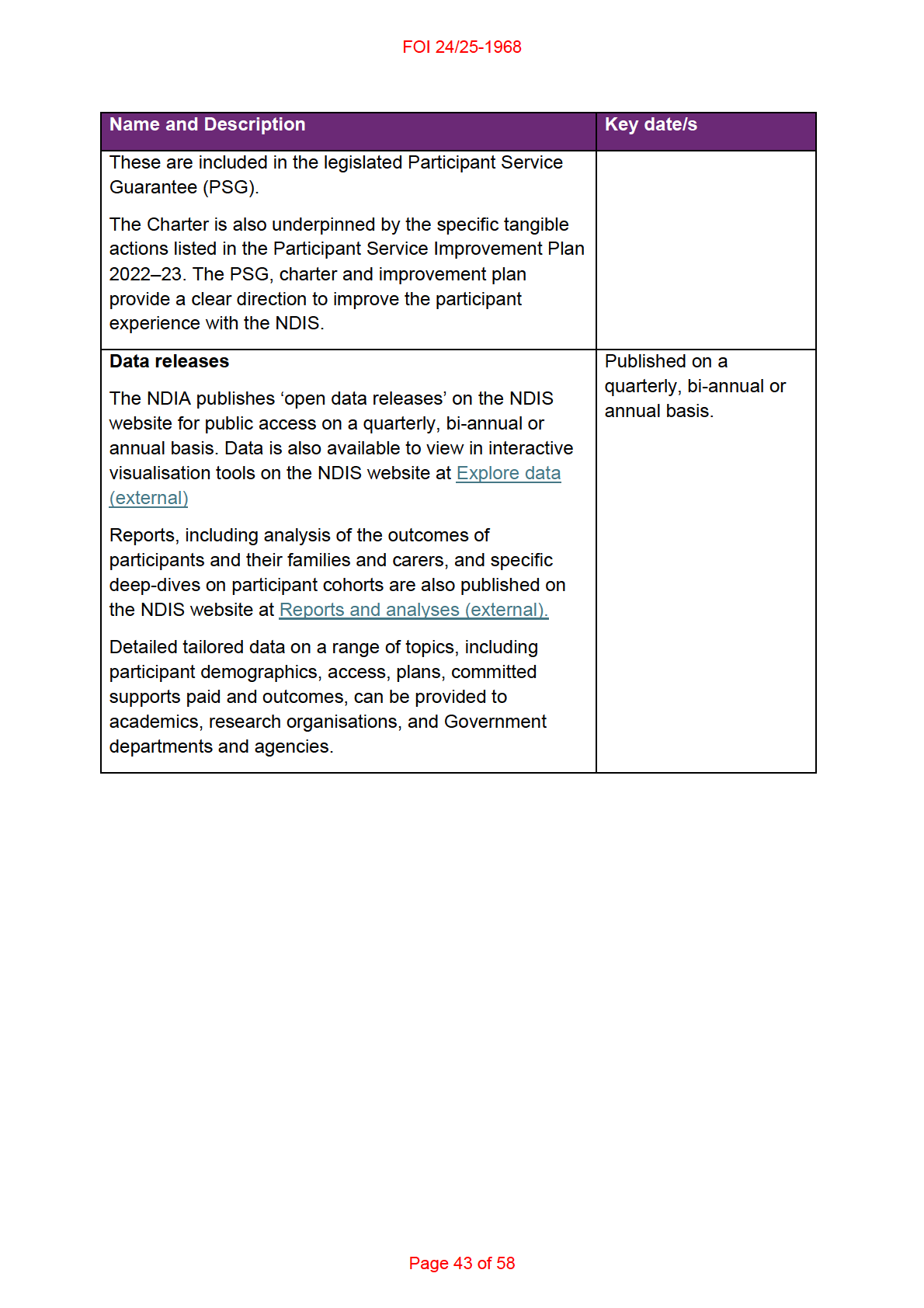
DISCLOSURE LOG DOCUMENT
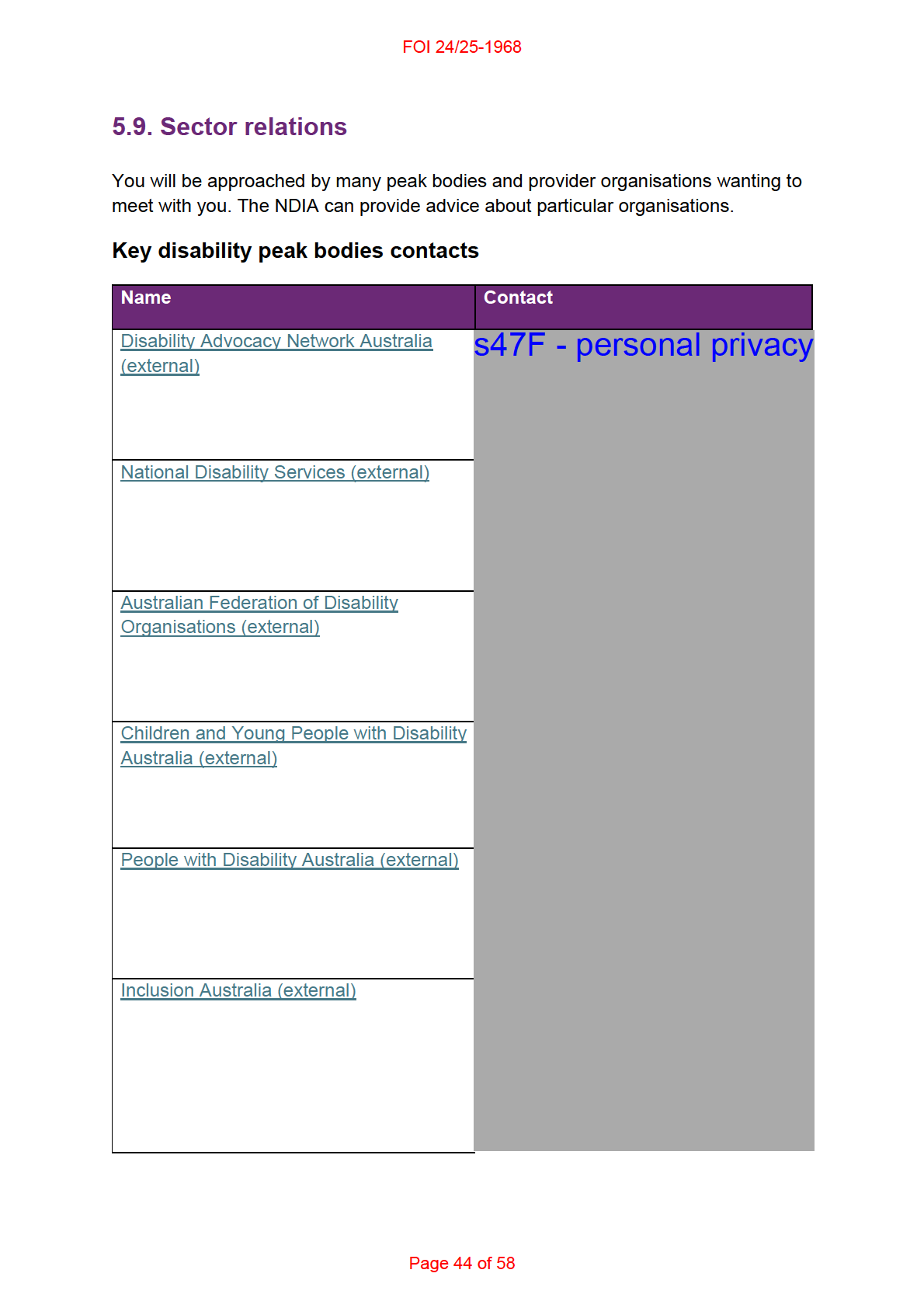
DISCLOSURE LOG DOCUMENT
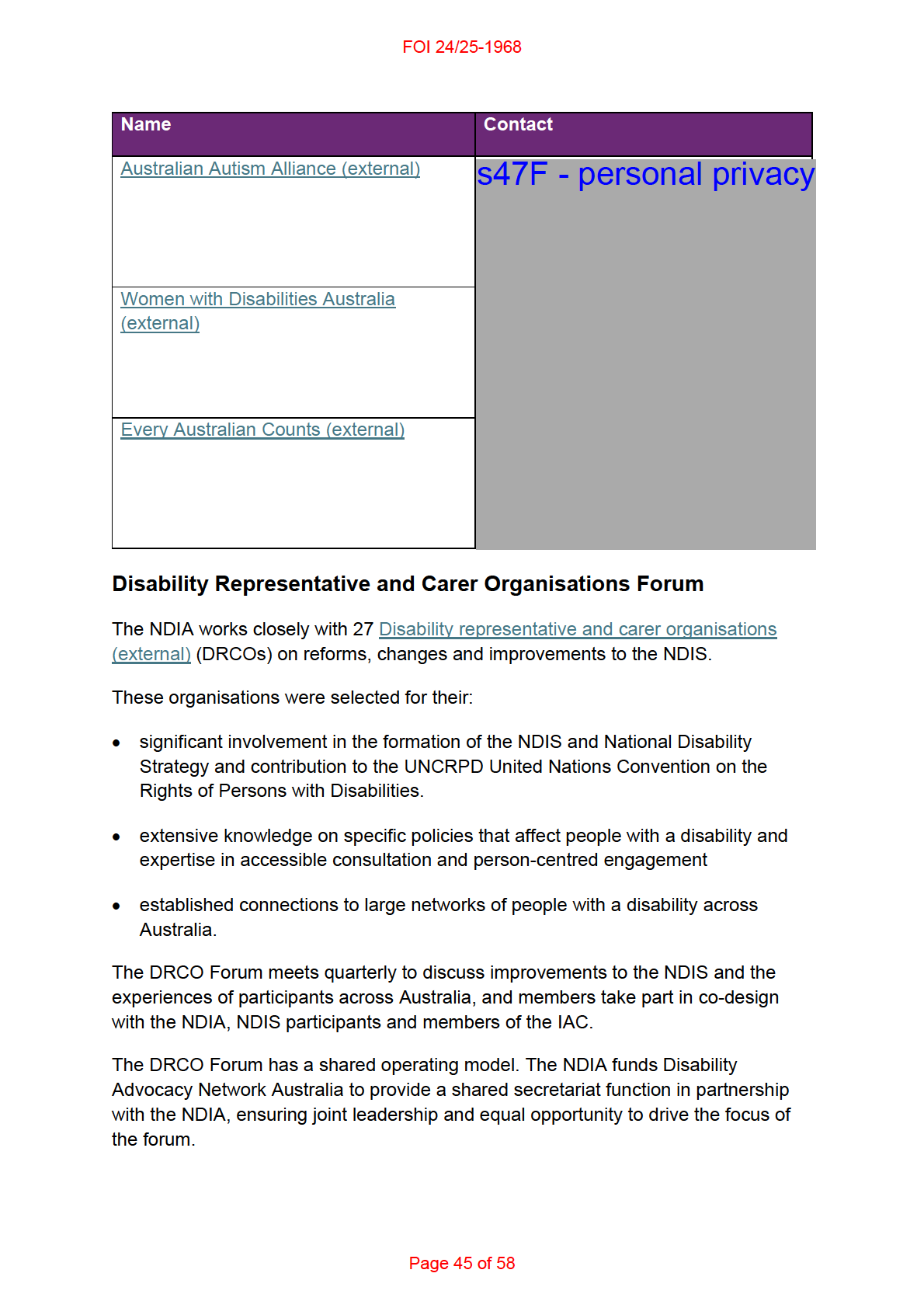
DISCLOSURE LOG DOCUMENT
DISCLOSURE LOG DOCUMENT
FOI 24/25-1968
The NDIA also has bespoke contracts with several national disability organisations to
address intersectionality in co-design activities and to connect with less heard voices
from the disability community.
Co-design Advisory Group
The Co-design Advisory Group provides strategic advice on the implementation of
co-design and engagement processes in the disability community.
Co-design Advisory Group members work together to ensure disability community
perspectives on issues facing the NDIS are represented; gather feedback on the
co-design priorities and approaches with peers and members; and provide and
receive strategic advice on the design, implementation and evaluation of co-design
and engagement.
Co-design Advisory Group members include representatives from the disability
sector, the IAC, and Government.
Further information on the Co-design Advisory Group, including the meeting
communique, is available at Co-design Advisory Group | NDIS (external).
Participant Reference Groups
The Participant Reference Group (PRG) consists of 23 participant and carer
representatives across Australia. Together, they represent the disability experiences
of NDIS participants. The PRG provides valuable insights and perspectives; lived
participant experience; advice to help develop, test and improve ideas; and guidance
on policy and service delivery challenges.
Further information on the PRG, including membership and the meeting
communique is available at Participant Reference Group | NDIS (external).
Page 46 of 58
DISCLOSURE LOG DOCUMENT
FOI 24/25-1968
National reference and advisory groups
The NDIA works closely with several sector reference groups to develop strong
working partnerships. These groups provide advice to inform decision-making about
specific topics, as detailed below.
• The Autism Advisory Group (external) was established in 2018 to provide a
strong voice on behalf of people with autism who are participating in the NDIS.
• The NDIA established the Children’s Expert Advisory Group (external) in 2024 to
focus on the experiences of children aged 0–14 years in the NDIS.
• Dispute Resolution Forum consults with participants, legal aid organisations,
governments and the disability sector on how to better engage with participants
who appeal an NDIA decision to the Administrative Review Tribunal.
• The IAC (external) represents the participant’s voice in the NDIS. Under the
NDIS Act, the IAC has a statutory function to advise the NDIA Board on the most
important issues affecting participants and their carers and families. Their advice
aims to improve the NDIS, the participant experience and outcomes.
• The Industry Chief Executive Forum (external), formerly the Industry Reference
Group, is to advise on improvements to the NDIS, which support development of
a competitive market with innovative supports and services, and empower
participants to pursue their goals in inclusive communities and workplaces.
• The Mental Health Sector Reference Group (external) was established to develop
a strong working partnership between the mental health sector and the NDIA.
• The Neurodegenerative, Palliative Care and Rare Diseases Advisory Group
(external) supports the NDIA to deliver improved experiences for people with
neurodegenerative and neuromuscular disorders, rare conditions and those
requiring palliative care. The first meeting was held in May 2024.
• The Pricing Arrangement Reference Group (external) was established in
response to the Independent Pricing Review commissioned by the NDIA Board to
address pricing issues raised by participants and providers. The group first met in
October 2018 and provides advice, through the CEO, to the NDIA Board on price
control arrangements for the NDIS.
• The Self-Management Advisory Group (external) provides strategic advice to the
NDIA about the needs of people who self-manage their NDIS plans. The group
helps shape co-design and engagement with the disability community about
changes that impact self-management.
Page 47 of 58
DISCLOSURE LOG DOCUMENT
FOI 24/25-1968
5.1. NDIS eligibility and funded supports
NDIS eligibility
To become an NDIS participant and get supports through an NDIS plan, a person
must meet the requirements set out in the NDIS Act, specifically the age, residency
and disability or early intervention requirements.
A person must be younger than 65 on the day they apply for the NDIS. This means
the application needs to be completed in the correct format and received by the
NDIA before they turn 65. A person must also be an Australian citizen, permanent
resident or Protected Special Category Visa holder and live in Australia.
If a person has a disability caused by a permanent impairment and usually needs
disability-specific supports to complete daily life activities, they may be eligible for
supports through an NDIS plan.
Under the NDIS Act, access to the NDIS is not based on type of disability or the
presence of underlying conditions, il ness or injury. Access is determined by the
permanency of a person’s impairment and a substantial reduction in their functional
capacity to engage in the activities of daily living.
To meet the disability requirements a person must demonstrate:
• they have a disability caused by an impairment
• their impairment is likely to be permanent
• their impairment means they have a substantially reduced functional capacity to
do one or more daily life activities, including moving around, communicating,
socialising, learning, undertaking self-care, or self-management tasks
• the impairment affects their ability to work, study or take part in social life
• they will likely need NDIS supports for their whole life.
Early intervention – Children younger than 9
Children younger than 9 with developmental delay or disability should be referred to
an NDIS early childhood partner. Under the early childhood approach an early
childhood partner provides timely support to ensure that the child and family can
access the right level of supports they need.
Page 48 of 58
DISCLOSURE LOG DOCUMENT
FOI 24/25-1968
This support may include:
• linking them to activities in their local community and mainstream supports
• gathering information to better understand the child’s development and needs
• developing goals with the family for their child
• delivering short-term early intervention, for children with developmental concerns
• supporting the access request if the child is likely to meet the access
requirements.
People older than 65
People aged 65 years and over who are looking for disability services and support
for the first time should be referred to My Aged Care for Government-funded aged
care services.
Who is not eligible for the NDIS
The NDIS wil not provide funding or supports for time-limited (non-ongoing)
conditions. For example, reduced mobility due to an acute injury, such as a lower
limb fracture, wil not meet the NDIS disability requirement, as the condition is likely
to resolve.
The NDIS wil also not provide funding or supports for chronic health conditions that
are not related to a person's disability. For example, the NDIS may fund disability
supports for a person who has had a lower limb amputation due to peripheral artery
disease because of diabetes (physical impairment resulting in disability secondary to
a health condition), as long as they meet all of the access requirements. However,
the NDIS wil not fund medication or medical care relating to the treatment of
diabetes or peripheral artery disease.
There are several supports and services provided by governments and the
community sector for people with disability across Australia, and the NDIA may
identify a person’s supports are best delivered by these other service systems. The
NDIA’s local area coordinators (LACs) and early childhood partners may also help
link people with disability to these services.
Supports the NDIS wil provide
The NDIS funds a range of supports and services that may include education,
employment, social participation, independence, living arrangements, and health and
wellbeing.
Page 49 of 58
DISCLOSURE LOG DOCUMENT
FOI 24/25-1968
To be considered reasonable and necessary, a support or service:
• must be related to a participant’s disability
• must not include day-to-day living costs unrelated to disability support needs,
such as groceries
• should represent value for money
• must be likely to be effective and work for the participant
• should take into account support provided by other government services, family,
carers, networks and the community.
Each support category in an NDIS plan includes a definition of the types of supports
a participant can use this funding for. The NDIA also groups these support
categories in one of 4 support budgets:
•
Core supports: NDIS supports to help with everyday activities, like help to take
part in activities in the community.
•
Capacity building supports: NDIS supports to help build skil s. This may
increase independence and reduce the need for the same level of support in the
future. Progress and outcomes from these supports wil be shared at each plan
reassessment.
•
Capital supports: NDIS supports including high-cost assistive technology,
equipment, vehicle modifications, home modifications and specialist disability
accommodation.
•
Recurring supports: NDIS supports paid by the NDIA on a regular basis.
This funding is not included anywhere else in a participant’s budget.
Supports the NDIS wil not provide
Under the NDIS Act, the NDIA cannot fund services, items and equipment that are
not NDIS supports. NDIS participants also cannot spend their funding on things that
are not NDIS supports.
In some specific circumstances, the NDIA can fund supports that are not NDIS
supports. These are cal ed replacement supports. They include a service, item or
equipment a participant would like to use instead of the NDIS support or supports in
their plan. Only some supports can be replaced, and only if the NDIA agrees in
writing this support can be purchased.
Page 50 of 58
DISCLOSURE LOG DOCUMENT
FOI 24/25-1968
There are 15 categories of goods and services that are not NDIS supports which are
either considered to be day-to-day living costs or not evidence-based supports.
These are services, items and equipment that can’t be funded by the NDIS.
Under the NDIS Act, the NDIA also cannot fund sexual services and sex work,
alcohol or drugs.
A full list of the 15 categories of goods and services that are not NDIS supports and
a full list of replacement supports are available at What does NDIS fund? | NDIS
(external).
Access pathway to the NDIS
Partner in the Community (Partners) organisations support people with disability and
over 70% of NDIS participants to connect with, understand and navigate the NDIS,
as well as connect to local community and mainstream supports. They also support
people with disability to apply for the NDIS.
Early childhood (EC) Partners support families of children aged 0 to 8 years to
connect to supports that best meet their child’s needs. This includes connecting
families to community and other government services or helping to apply to the
NDIS. Additionally, EC Partners provide early supports for children younger than 6
with developmental concerns.
Local Area Coordinator (LAC) Partners support people 9 years and over to
understand and access the NDIS, implement their NDIS plan and build capacity
within the community. LACs support the inclusion of all people with disability by
developing community connections.
Page 51 of 58
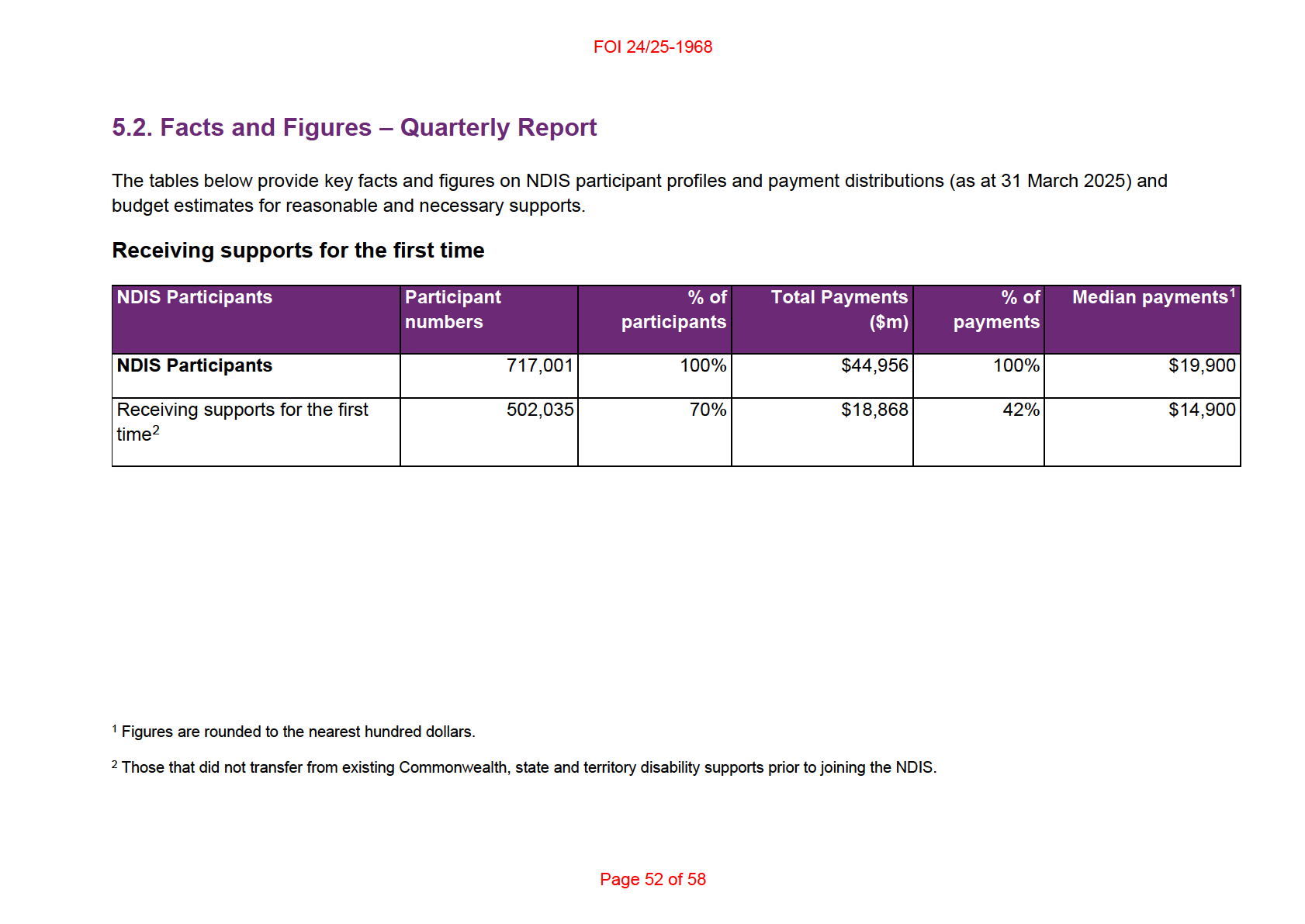
DISCLOSURE LOG DOCUMENT
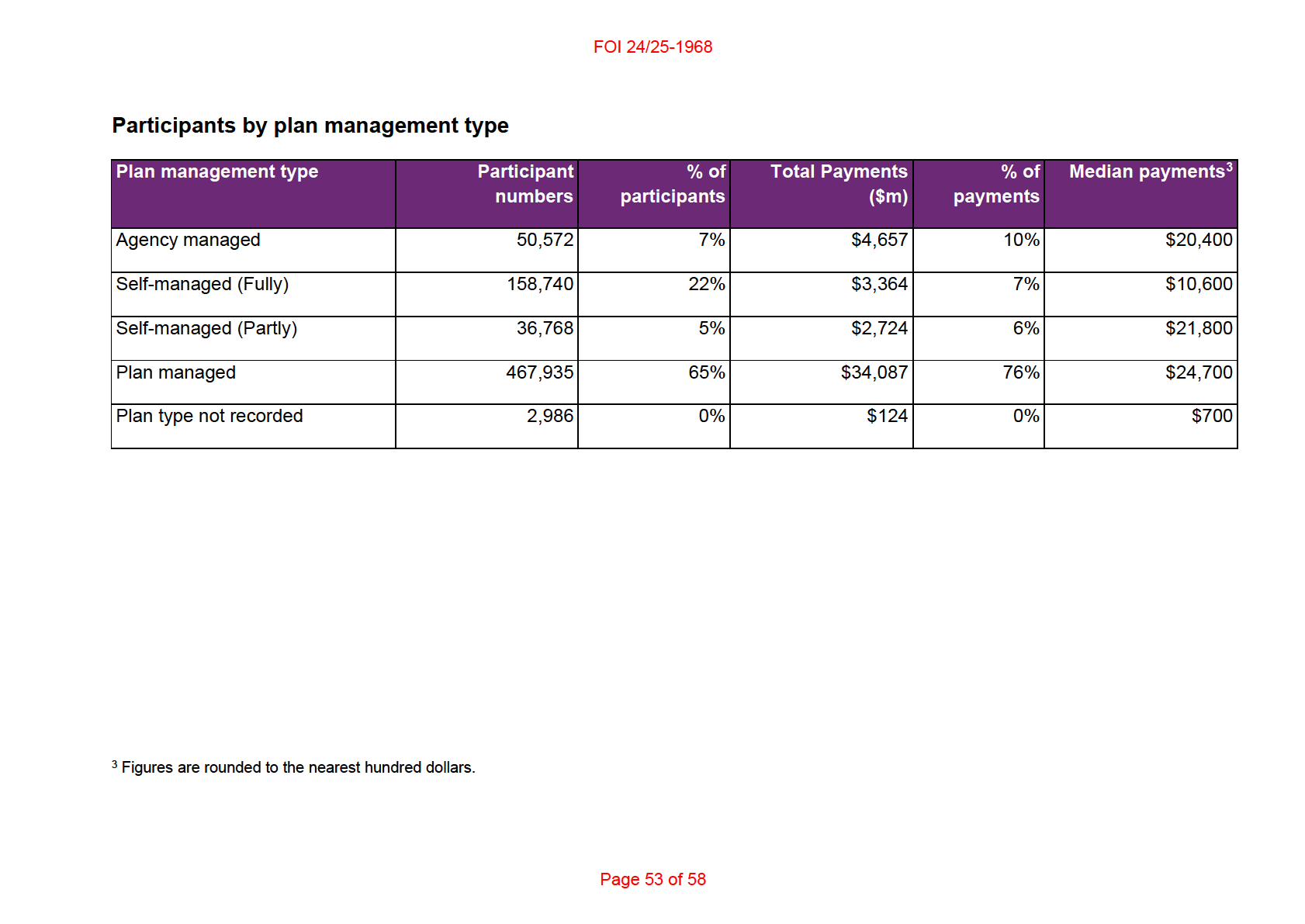
DISCLOSURE LOG DOCUMENT
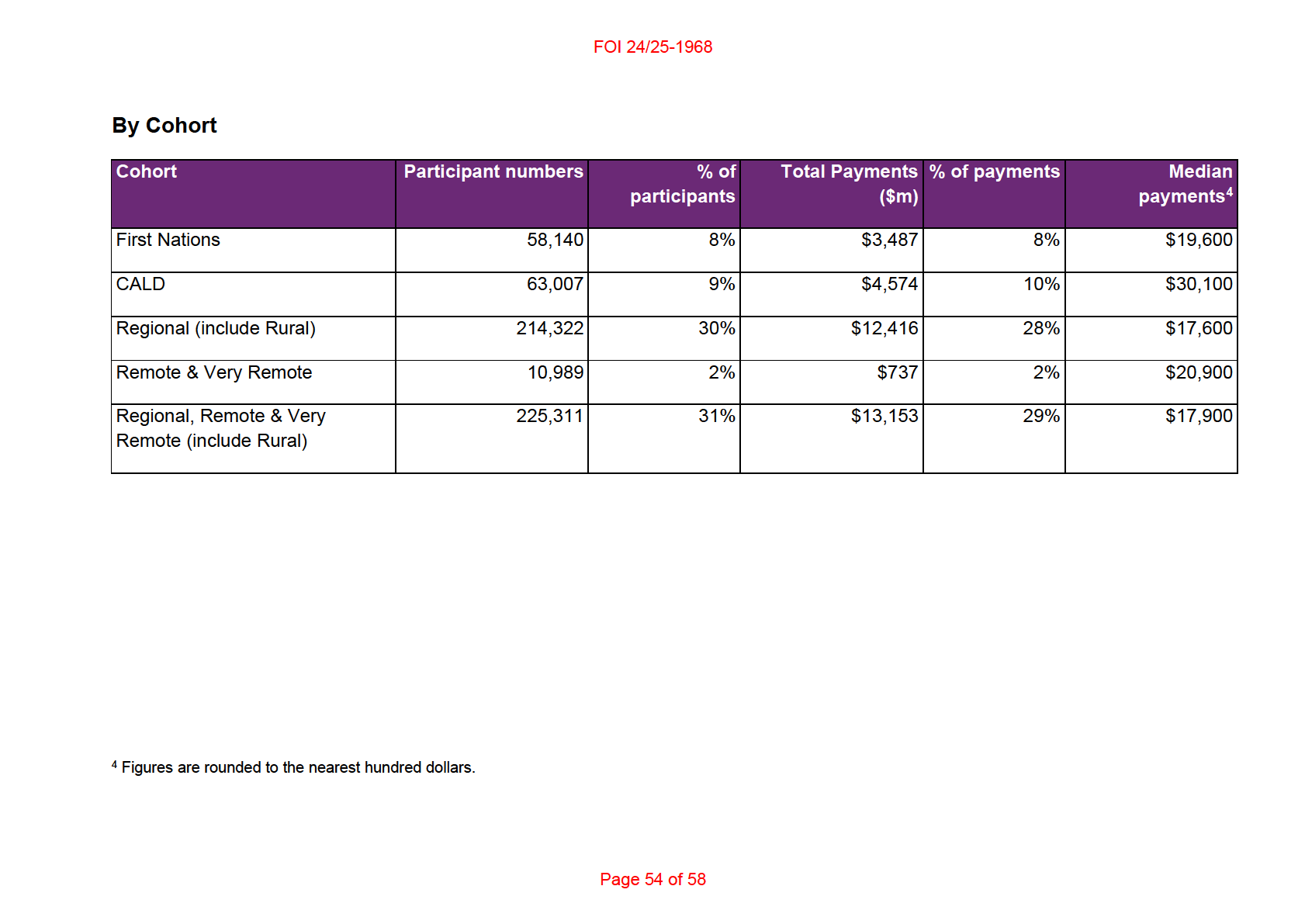
DISCLOSURE LOG DOCUMENT
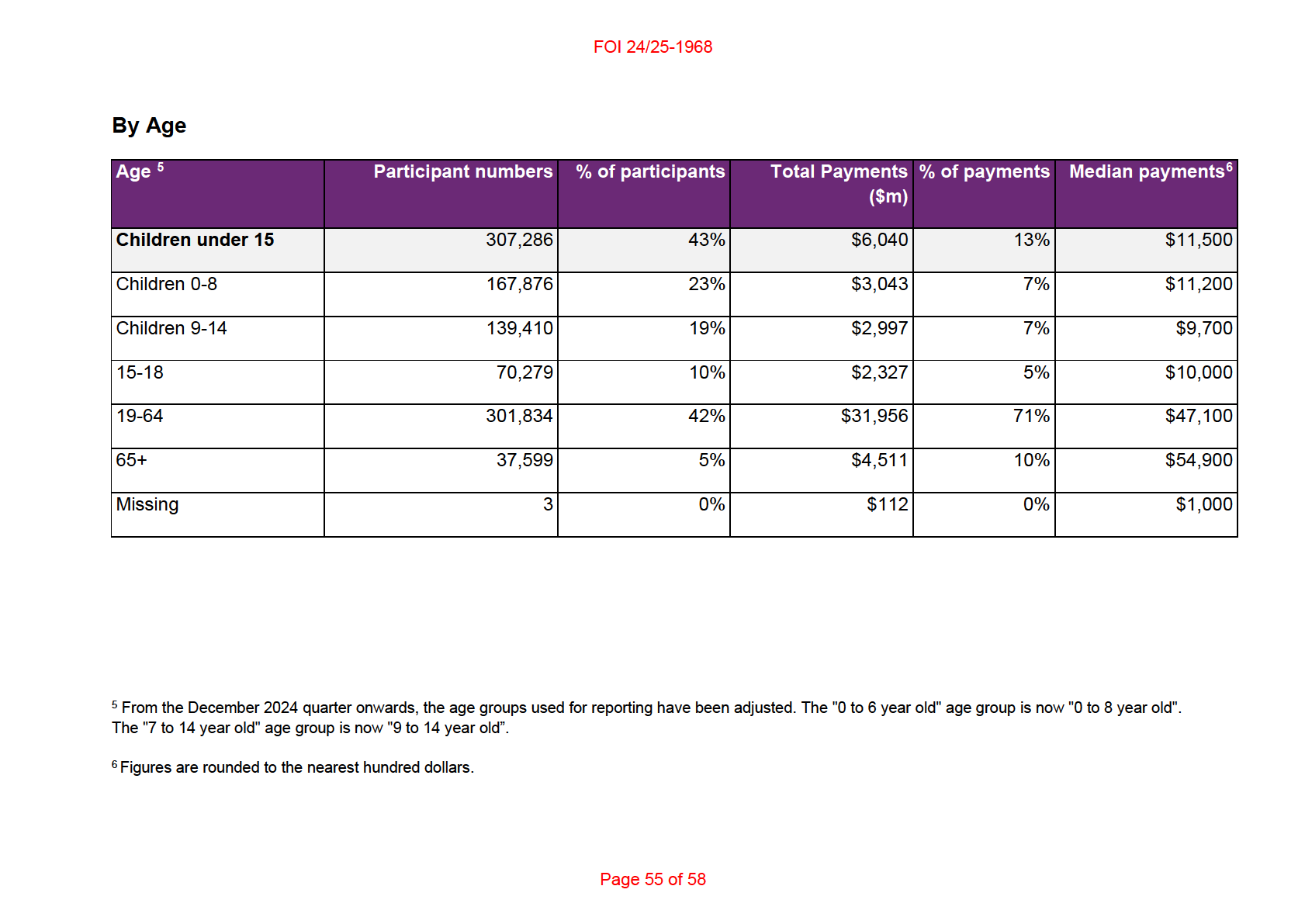
DISCLOSURE LOG DOCUMENT
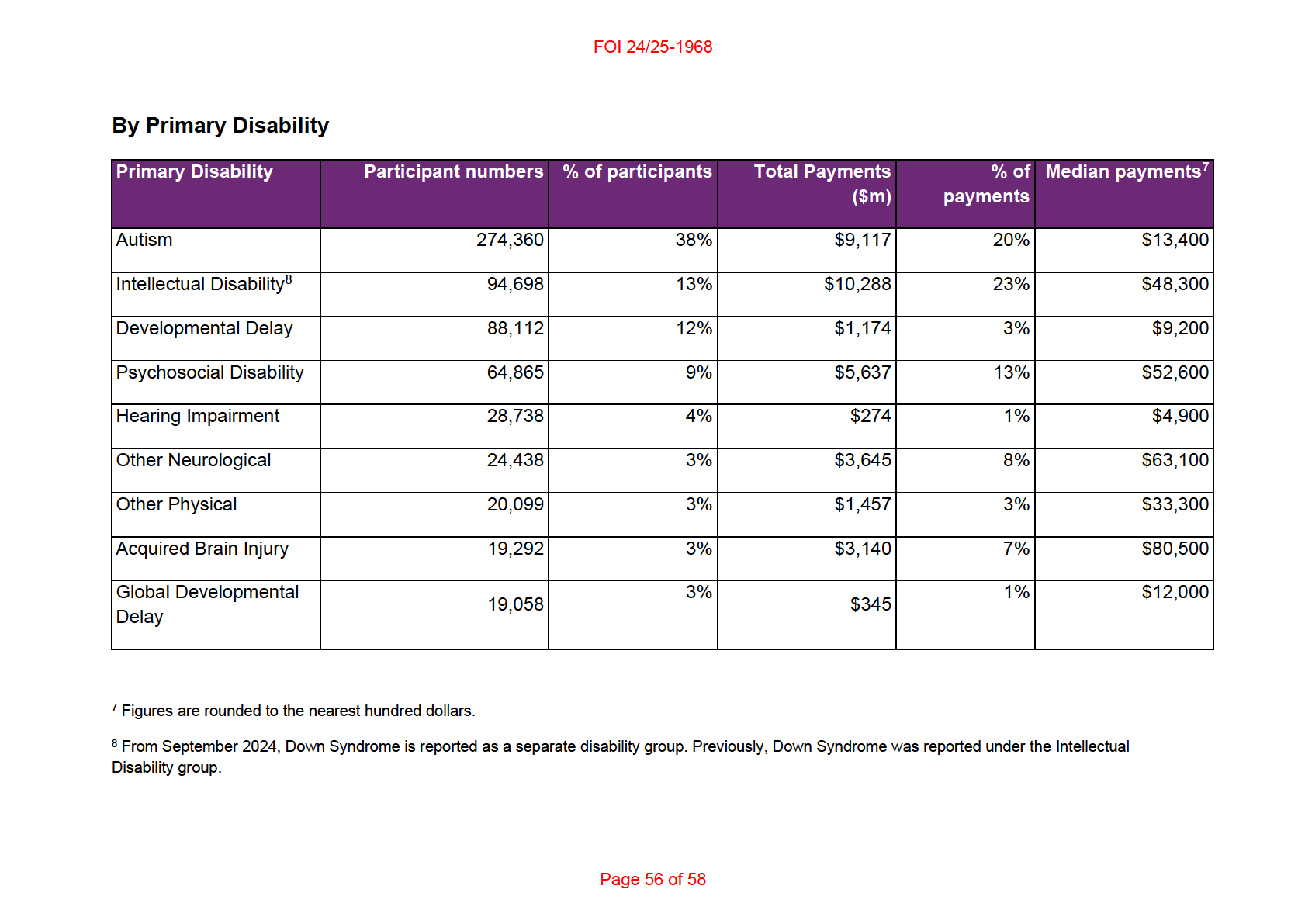
DISCLOSURE LOG DOCUMENT
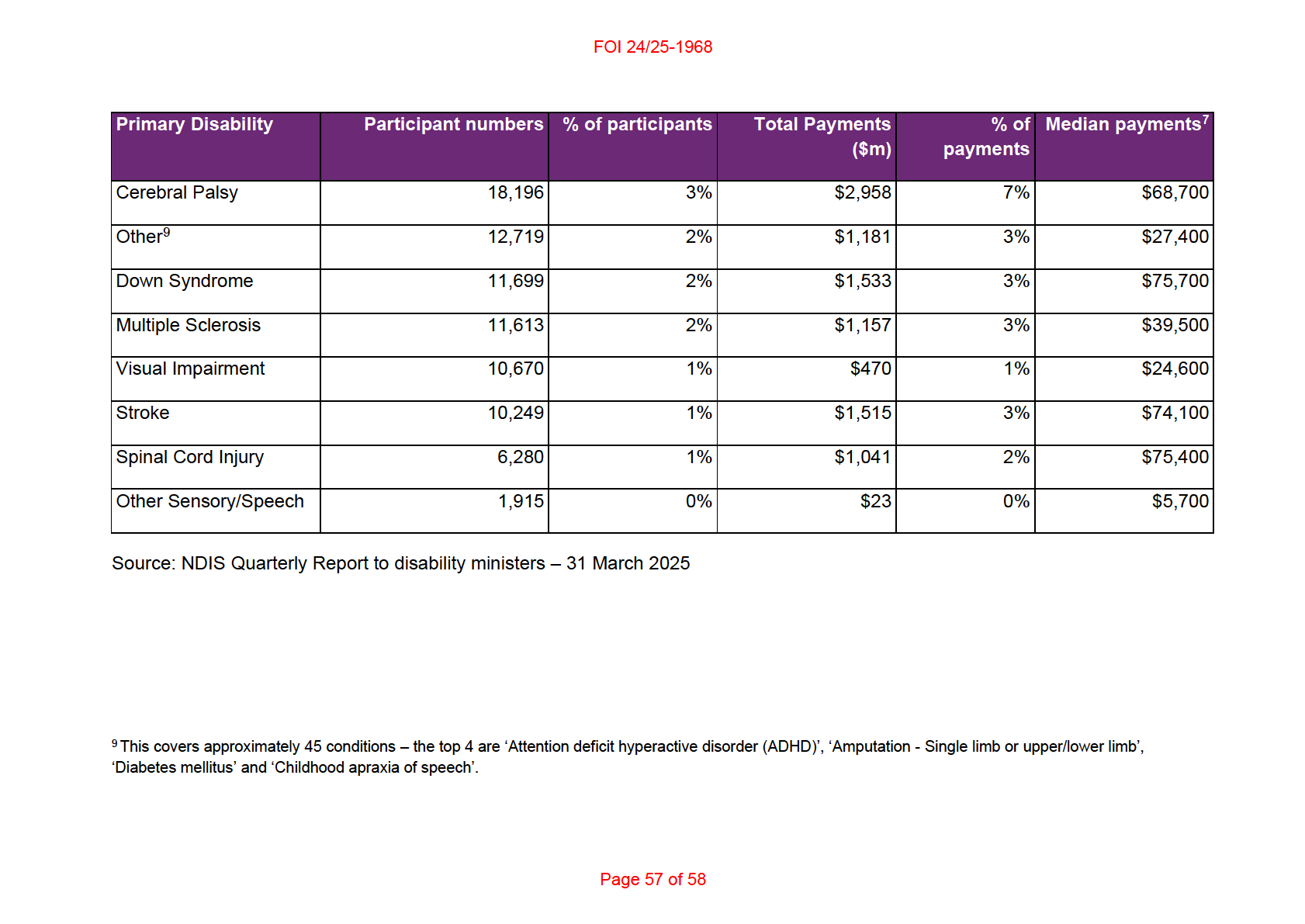
DISCLOSURE LOG DOCUMENT
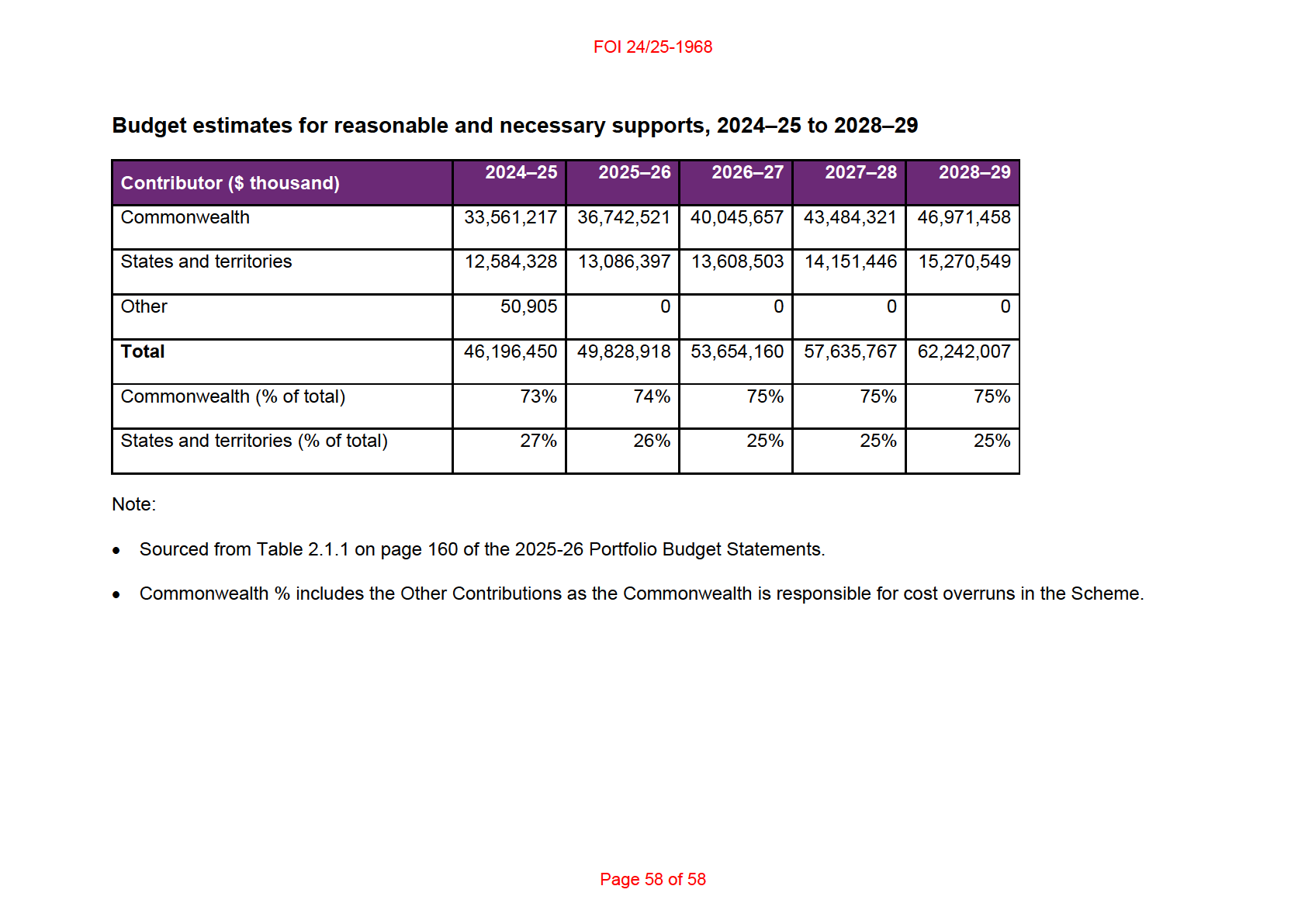
DISCLOSURE LOG DOCUMENT













